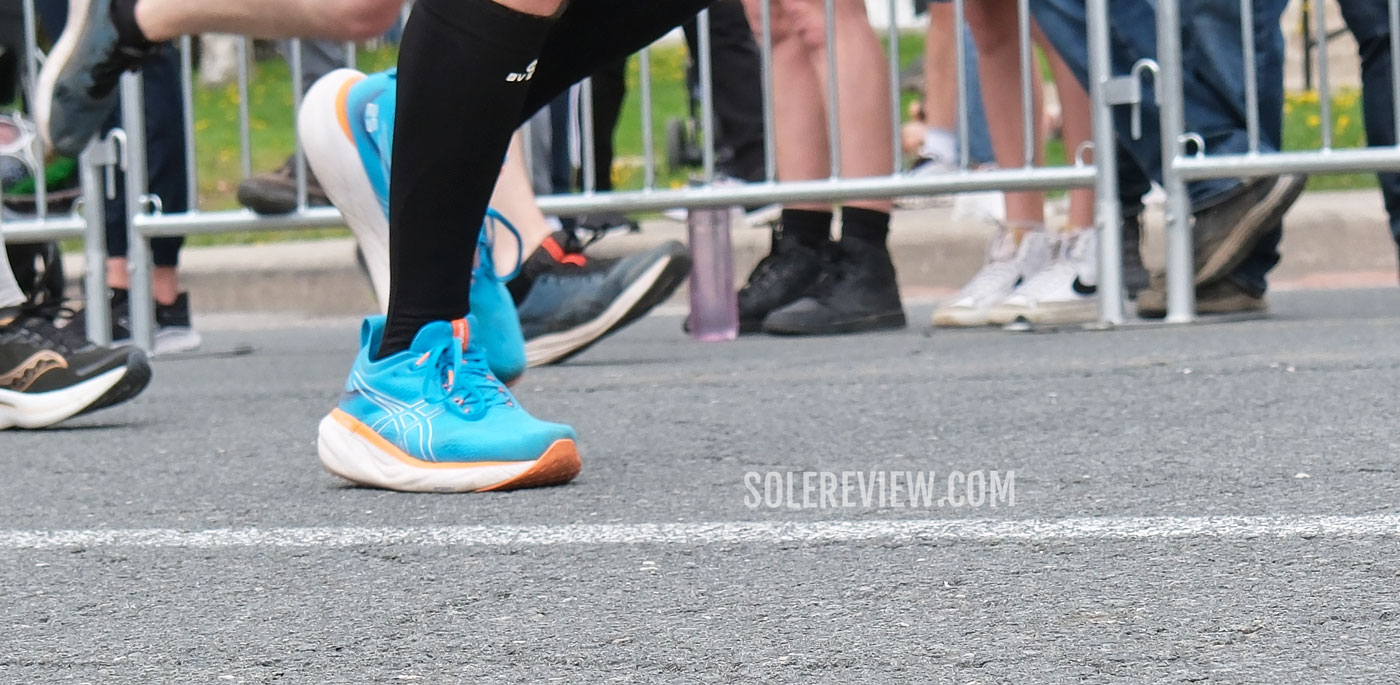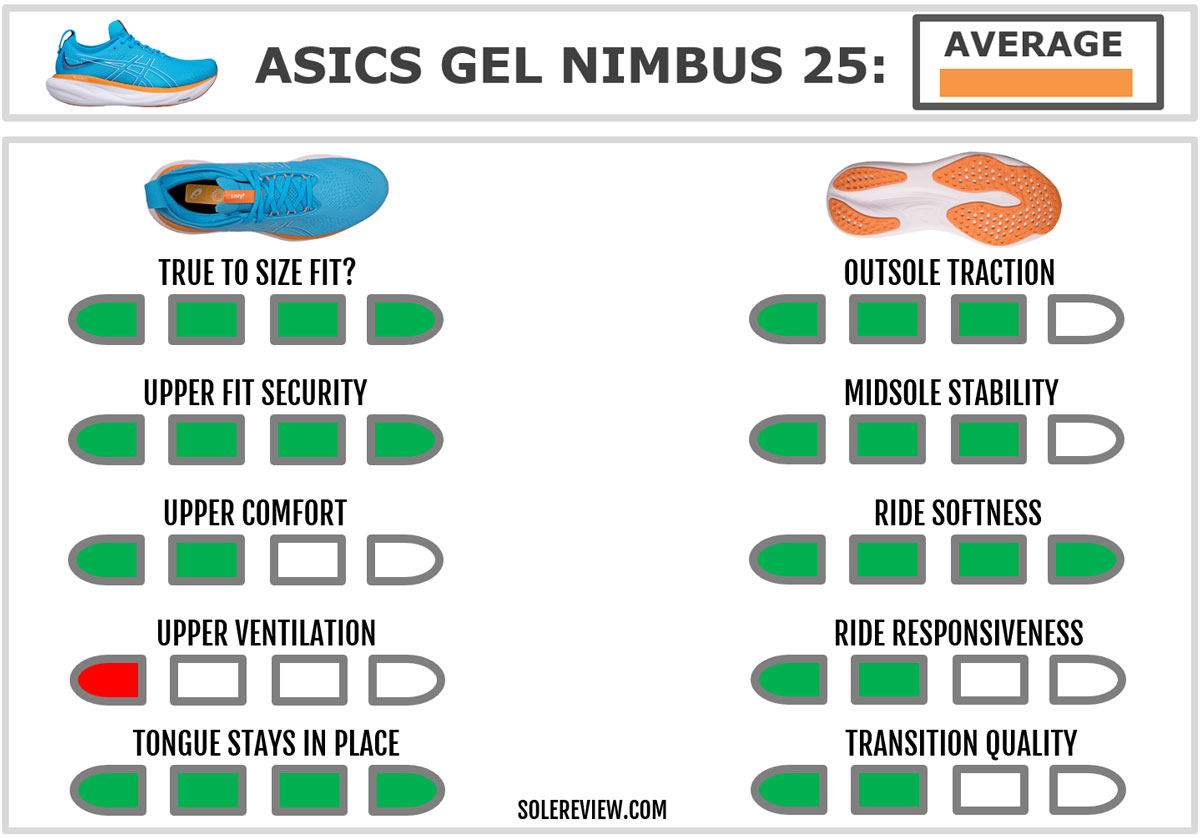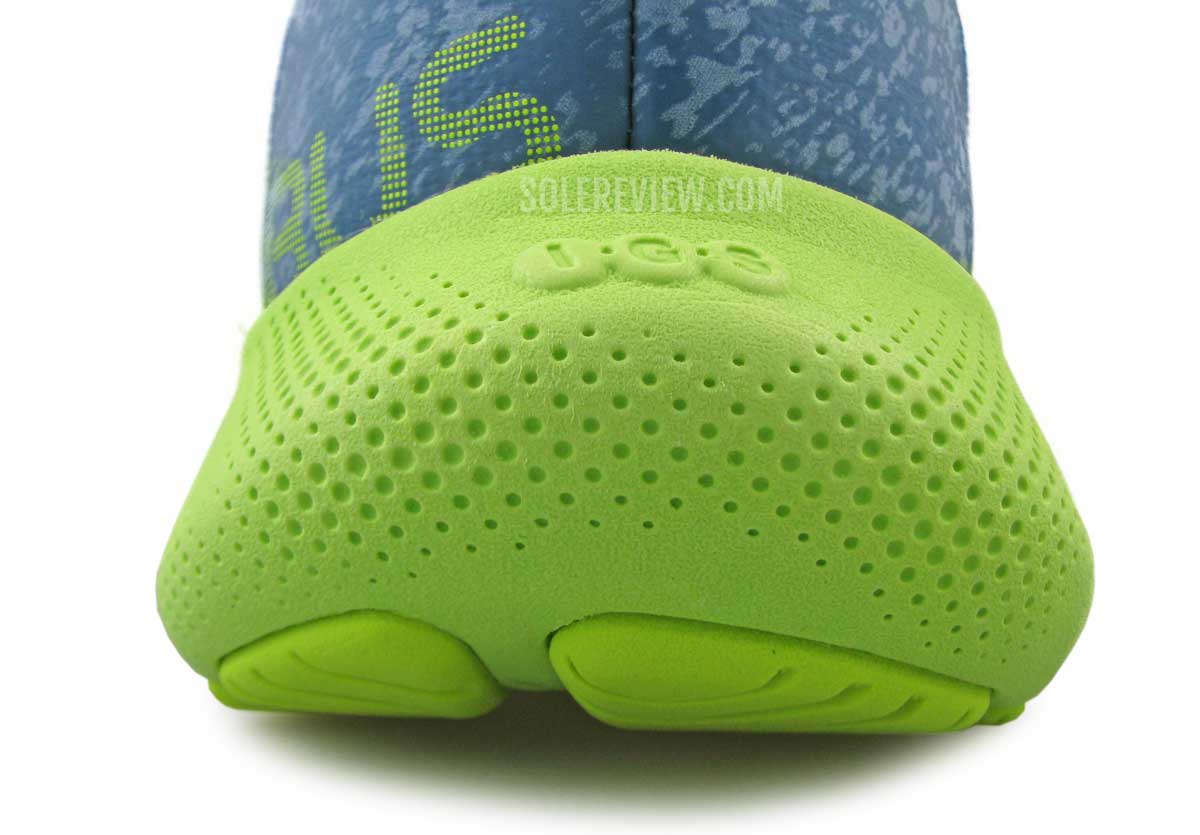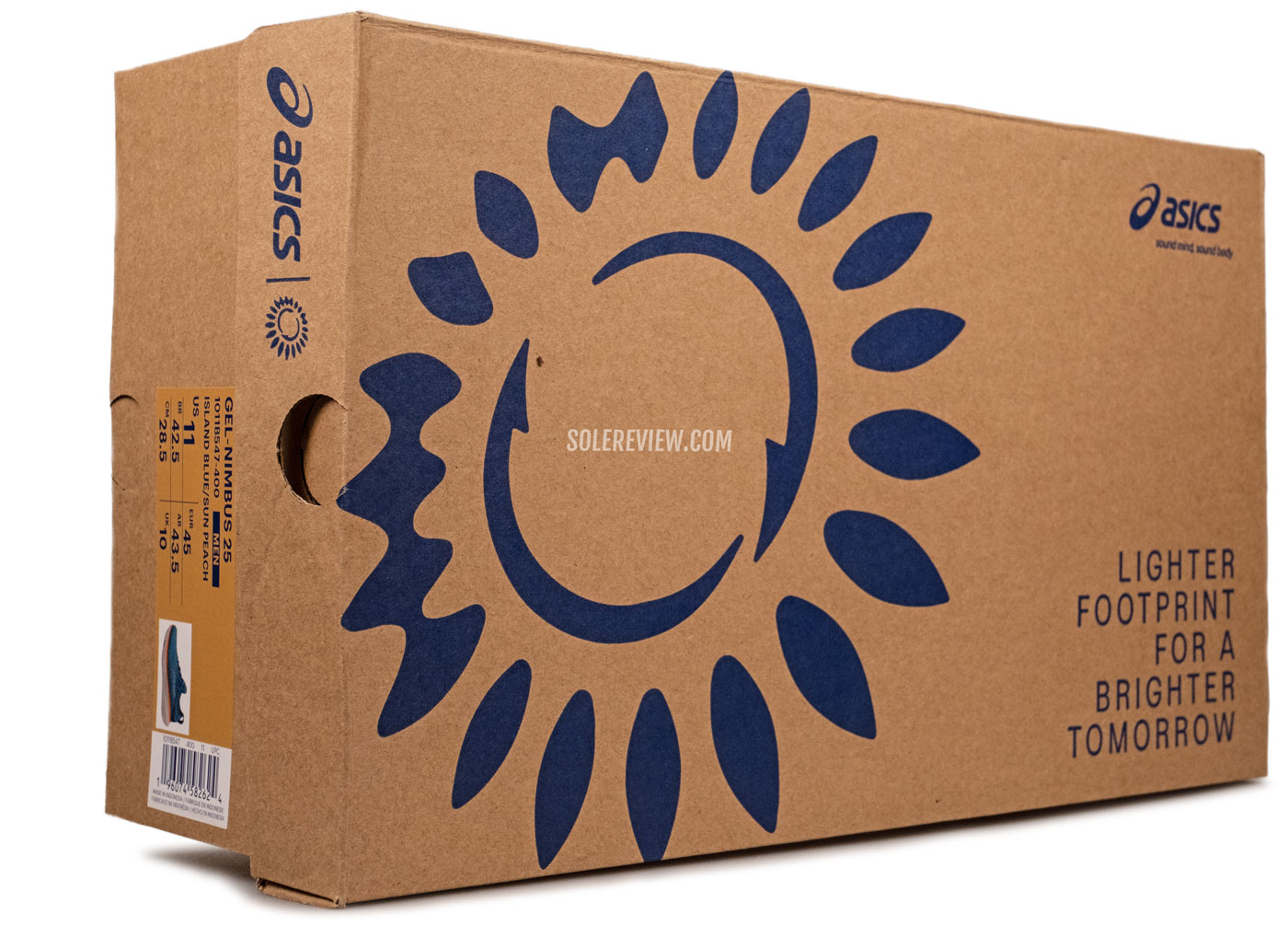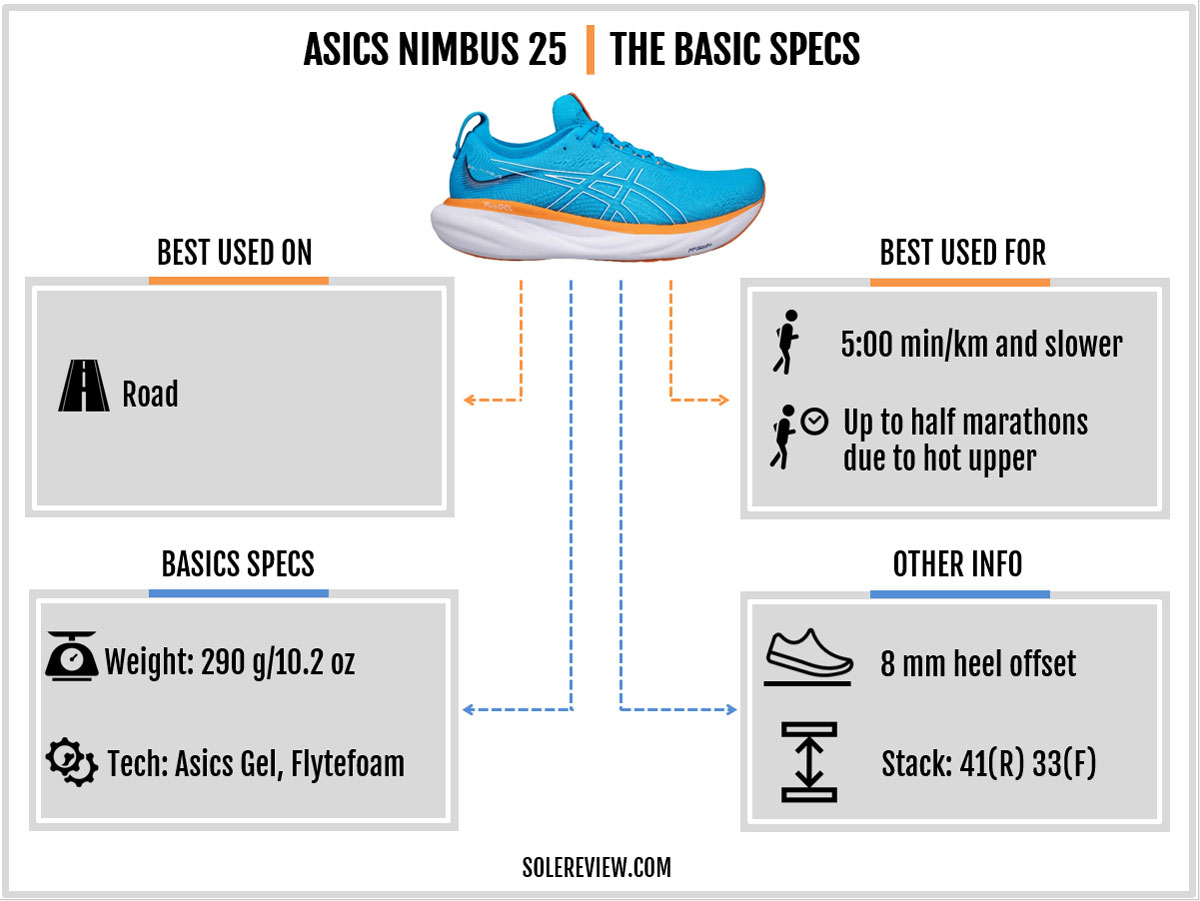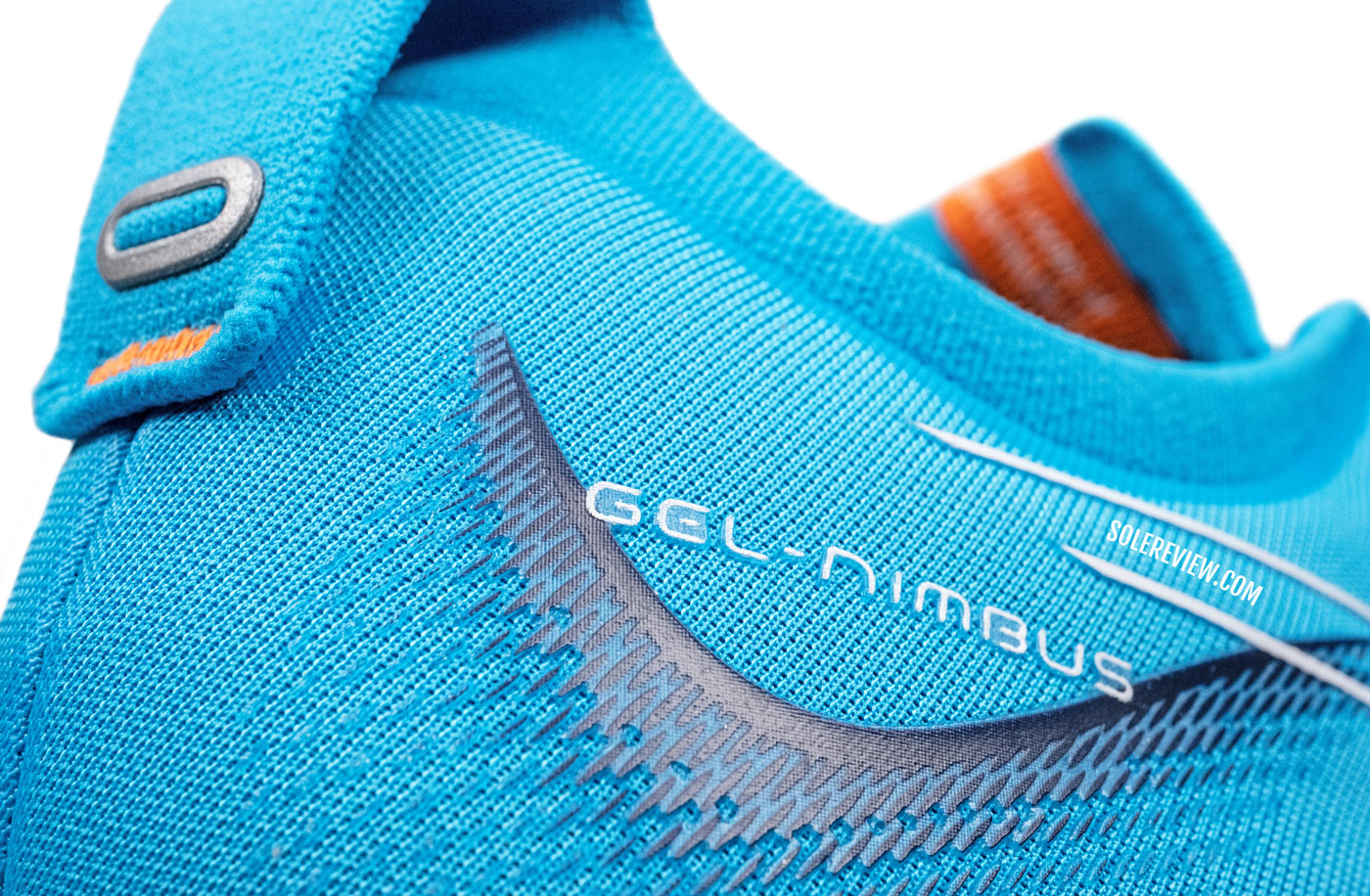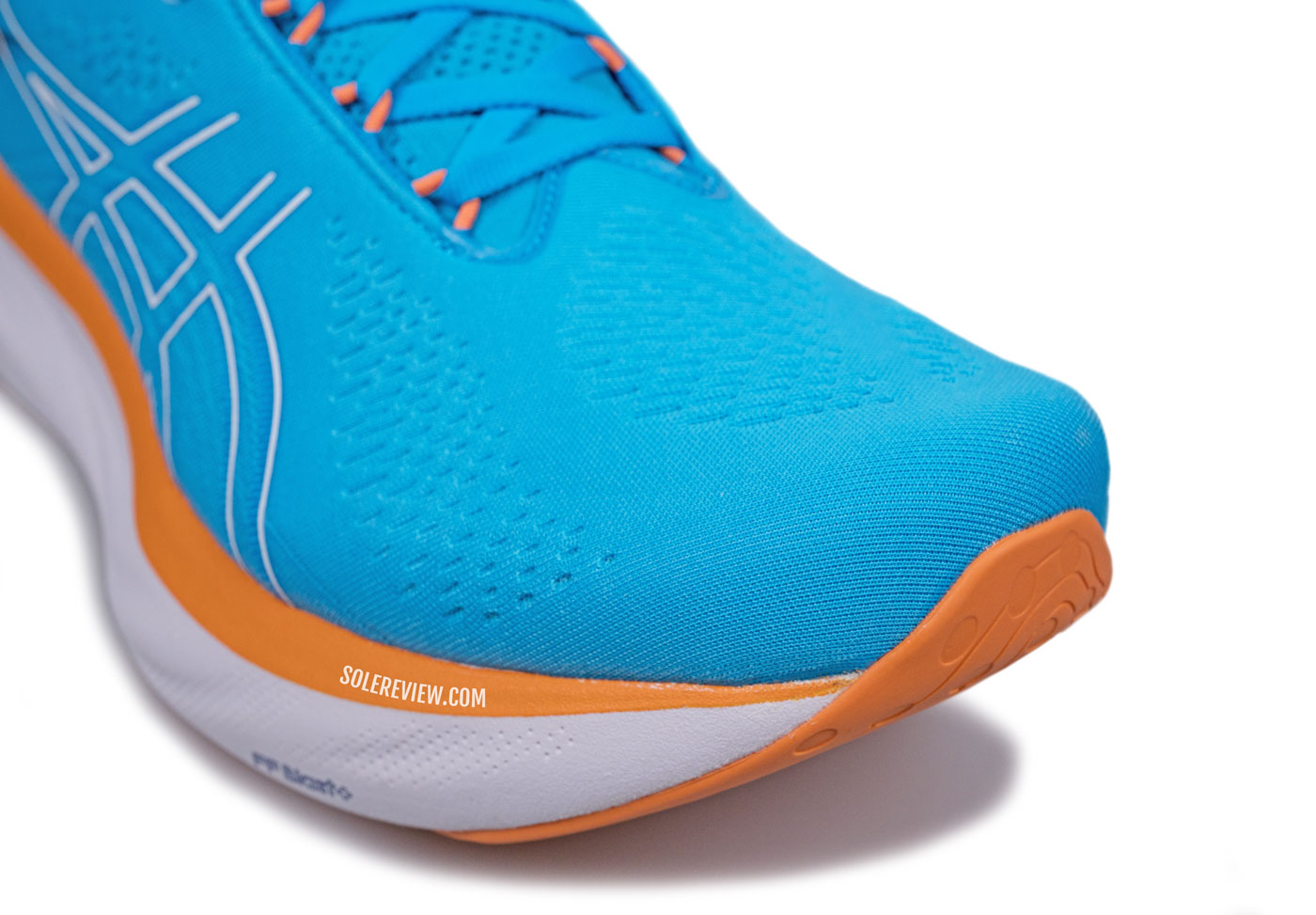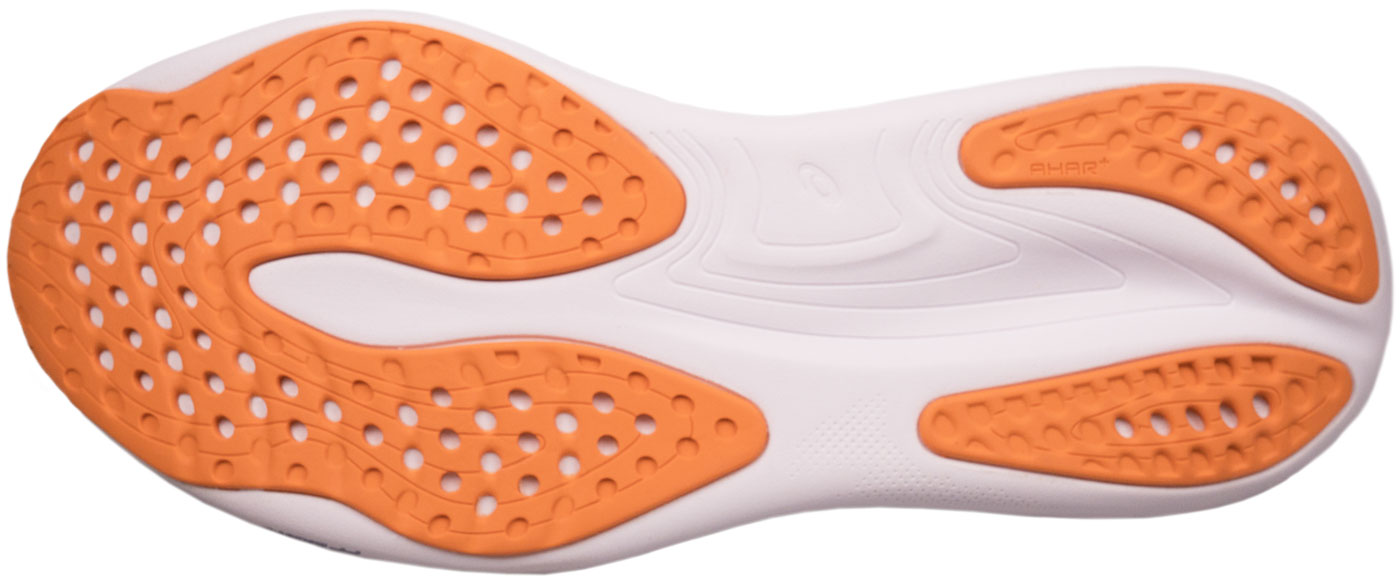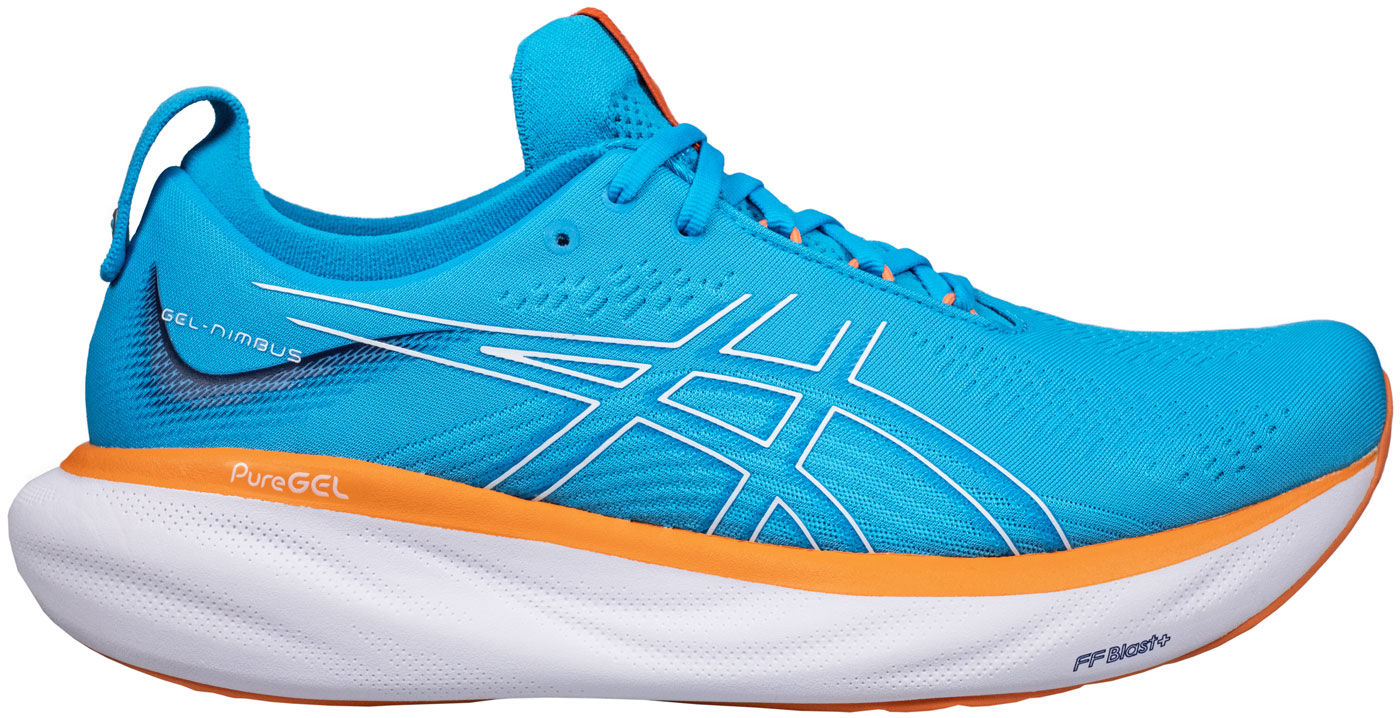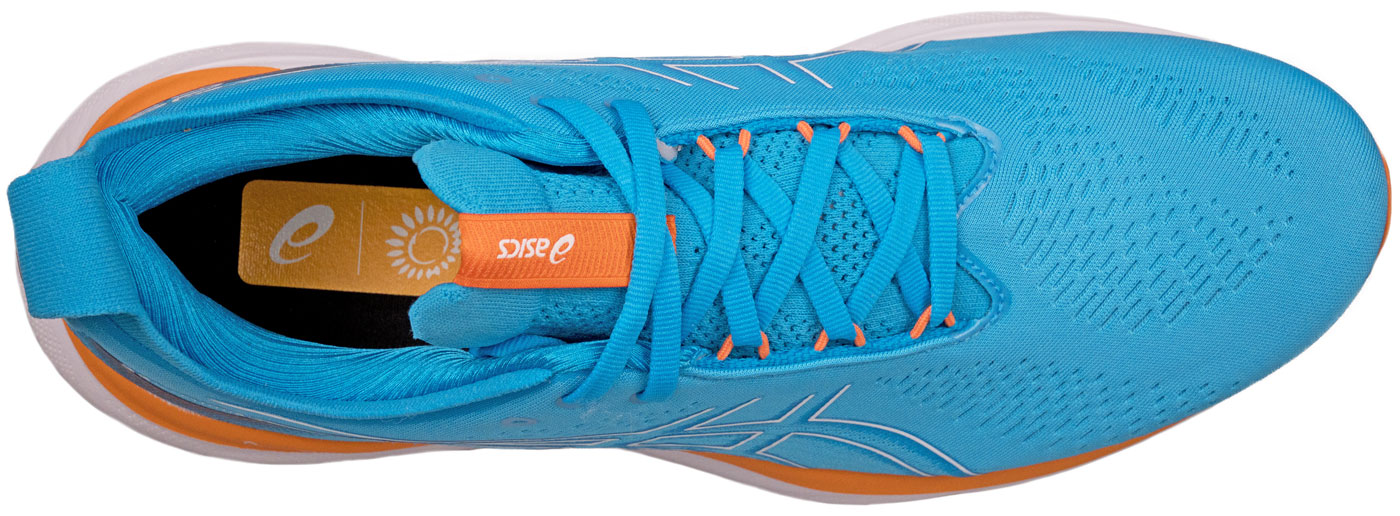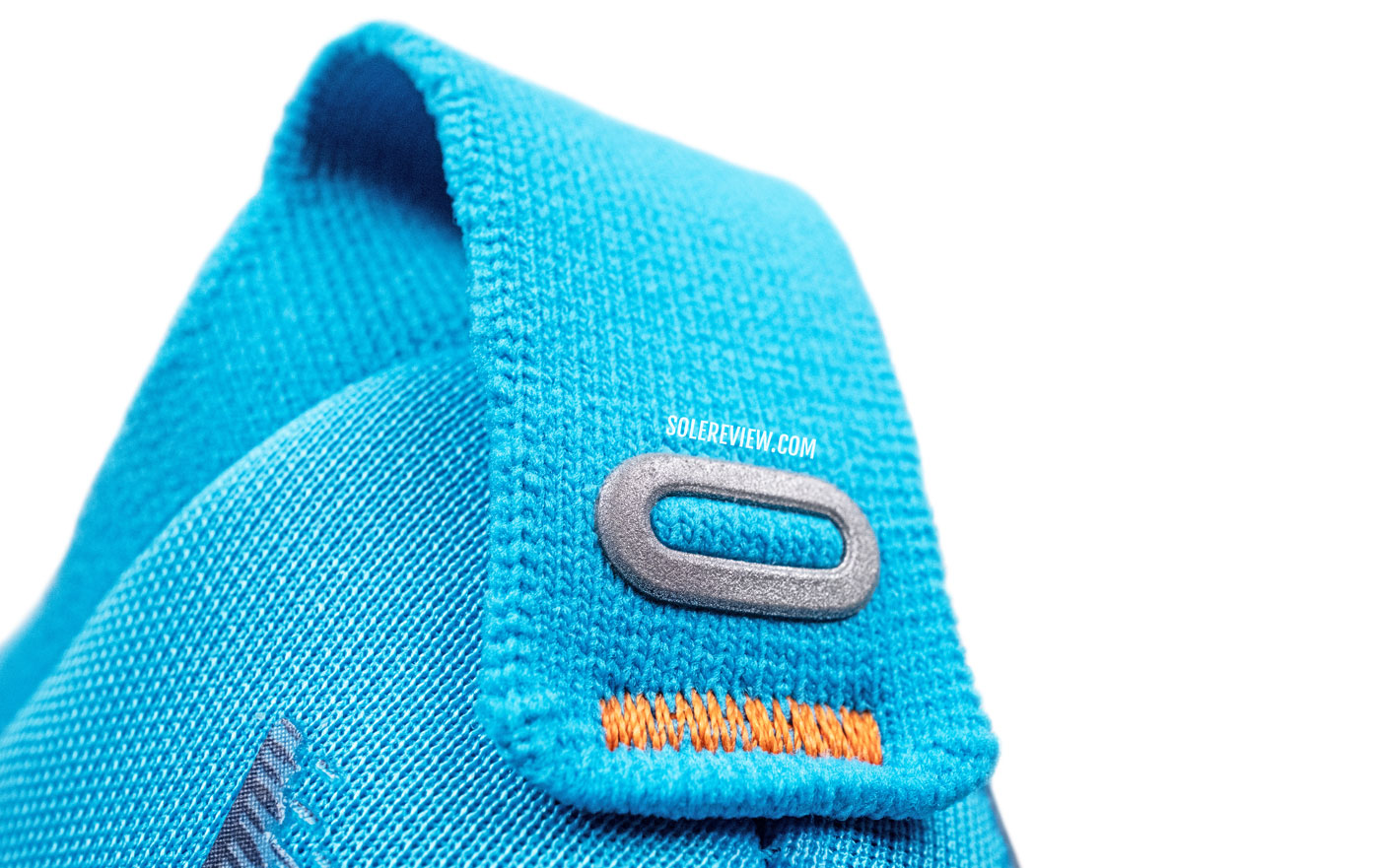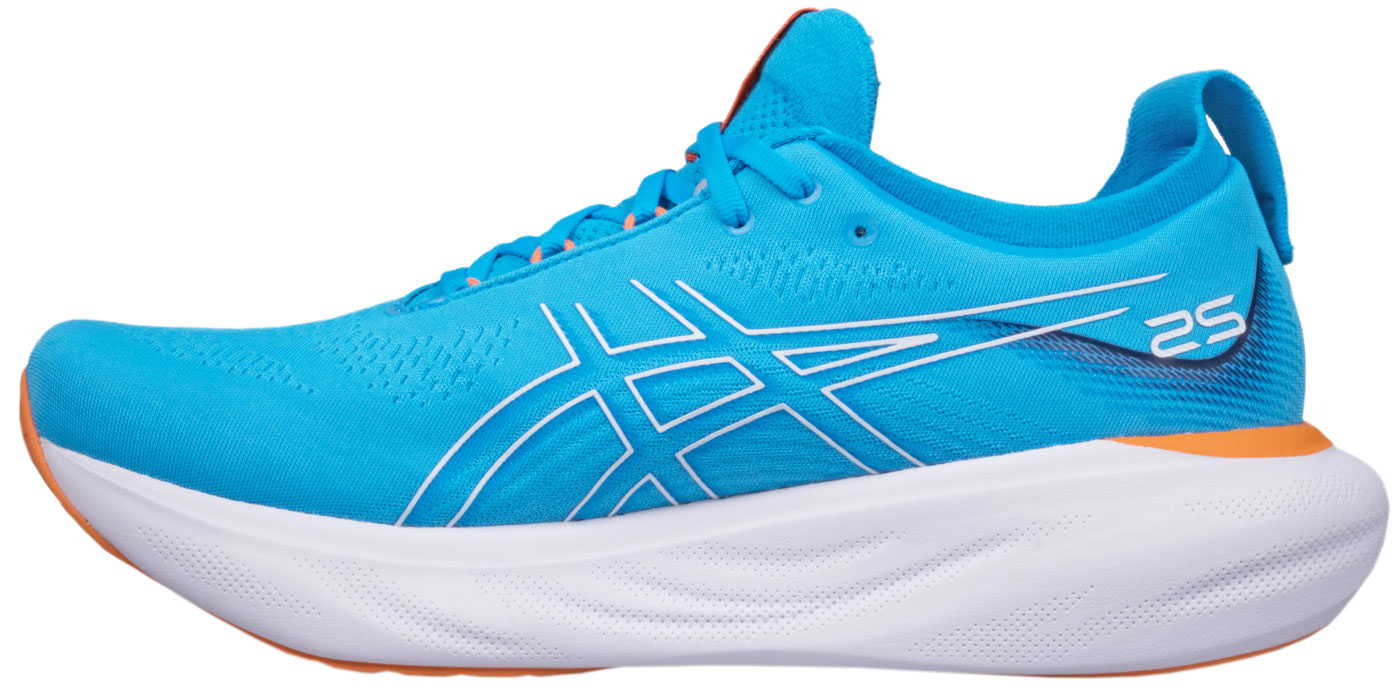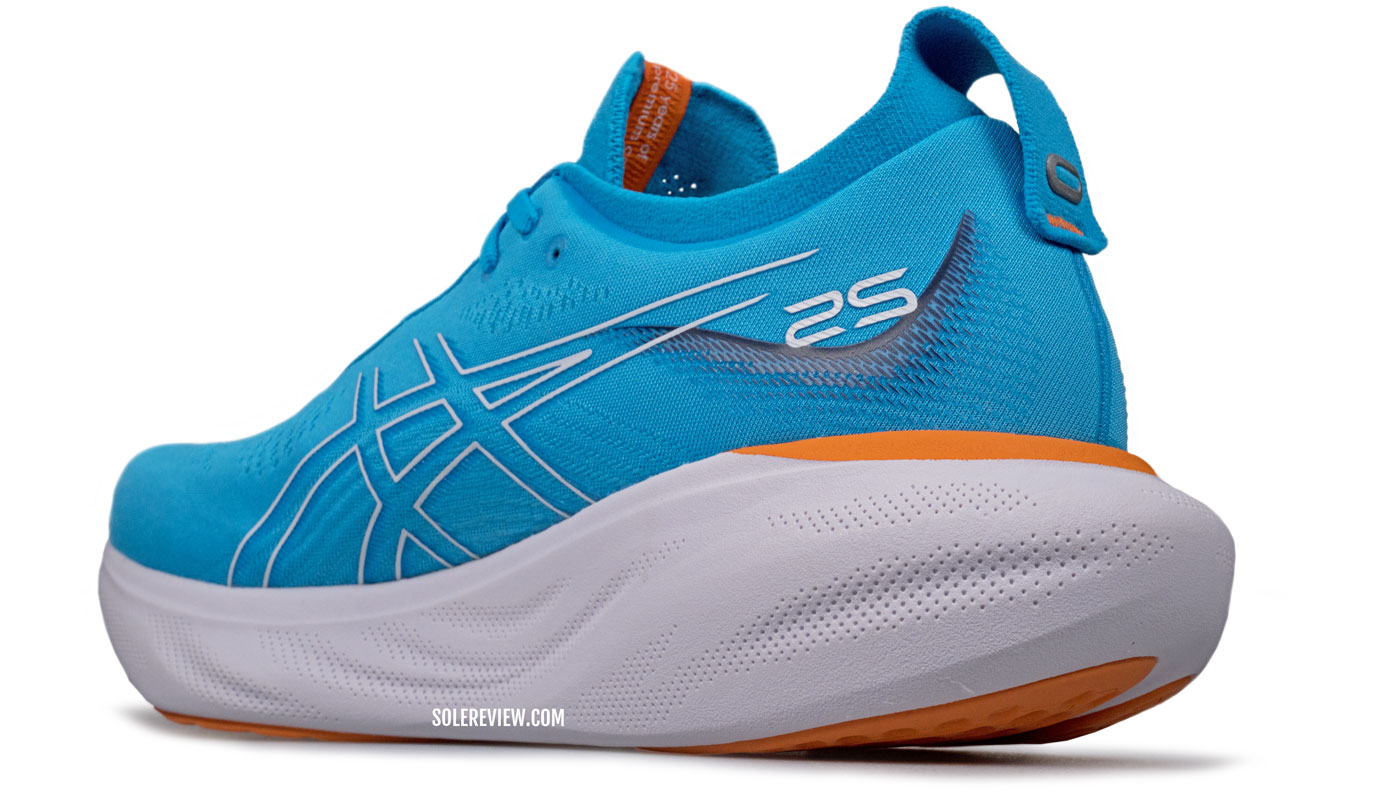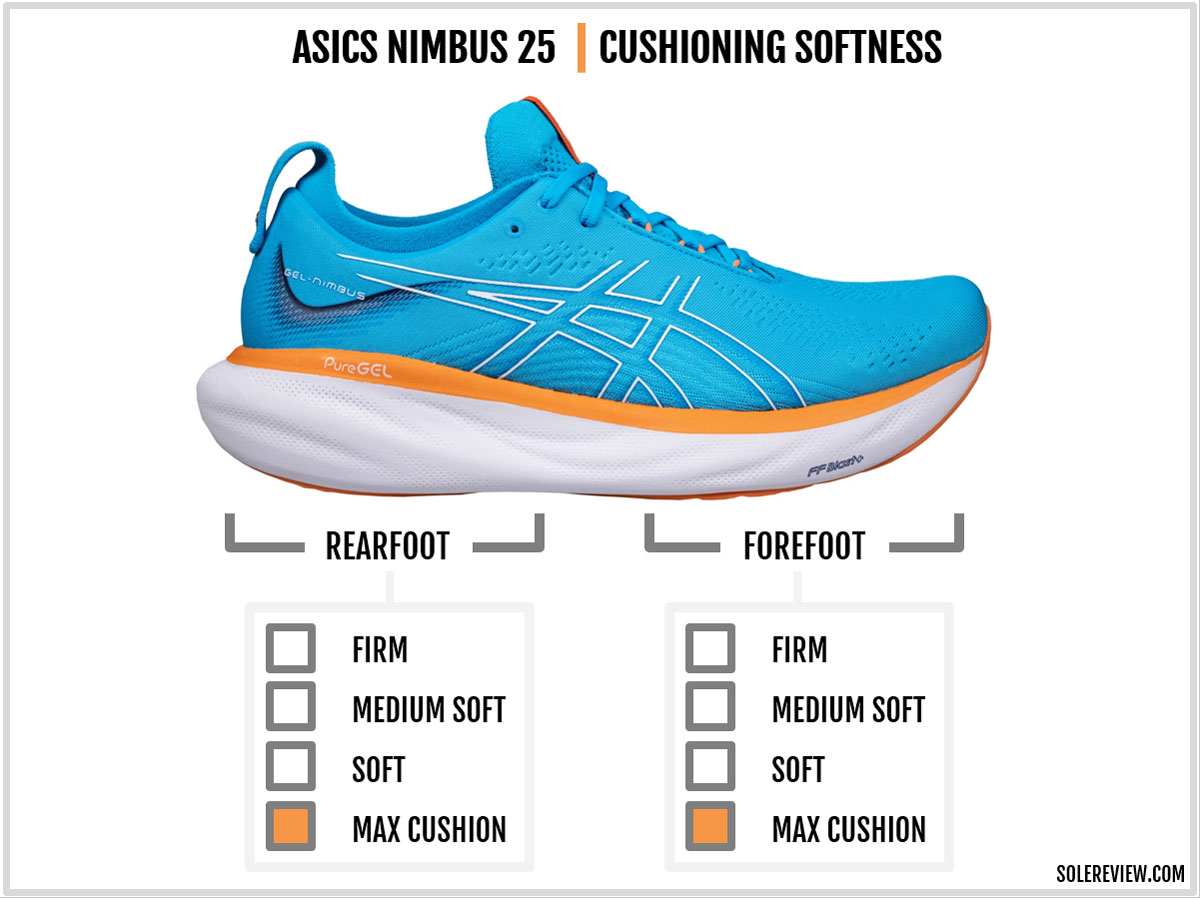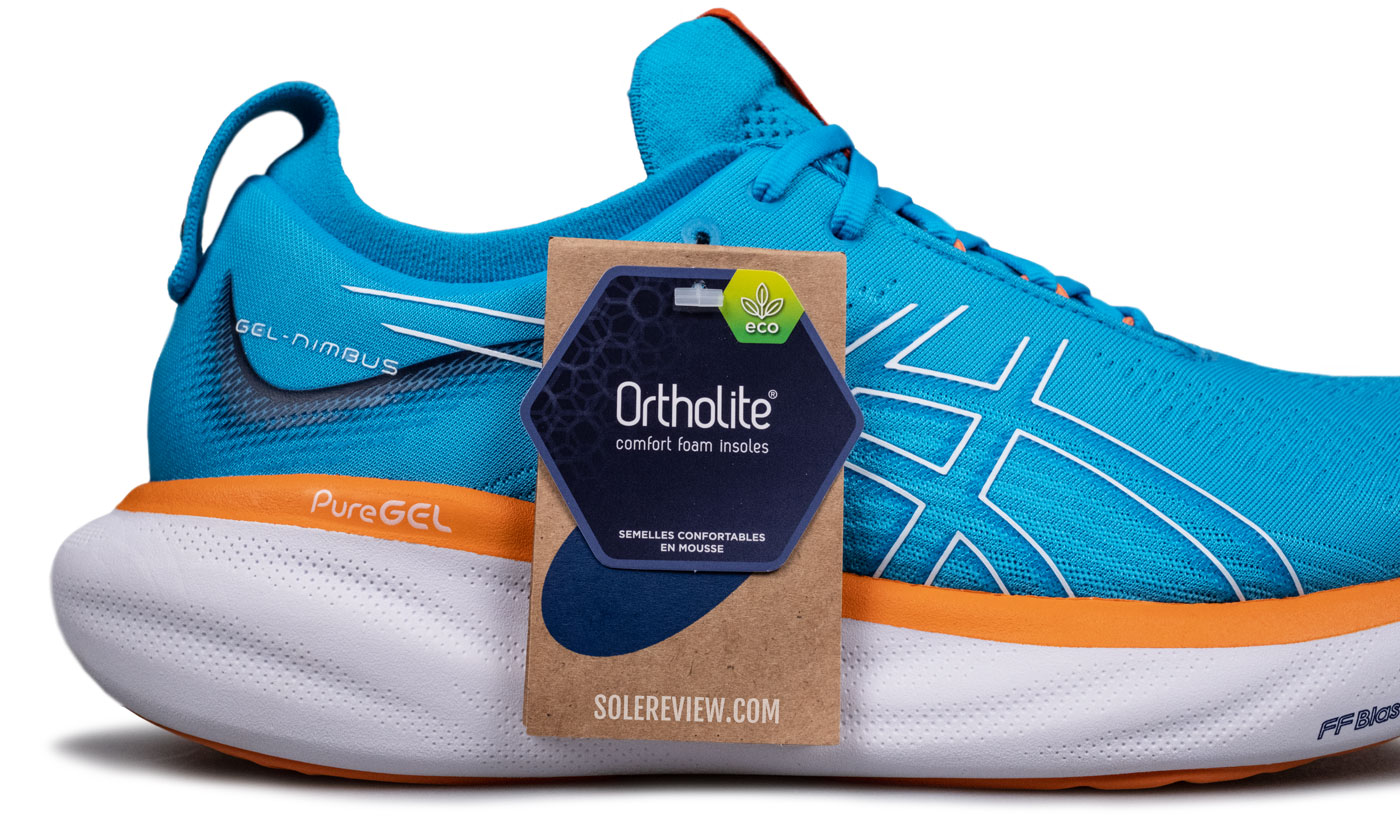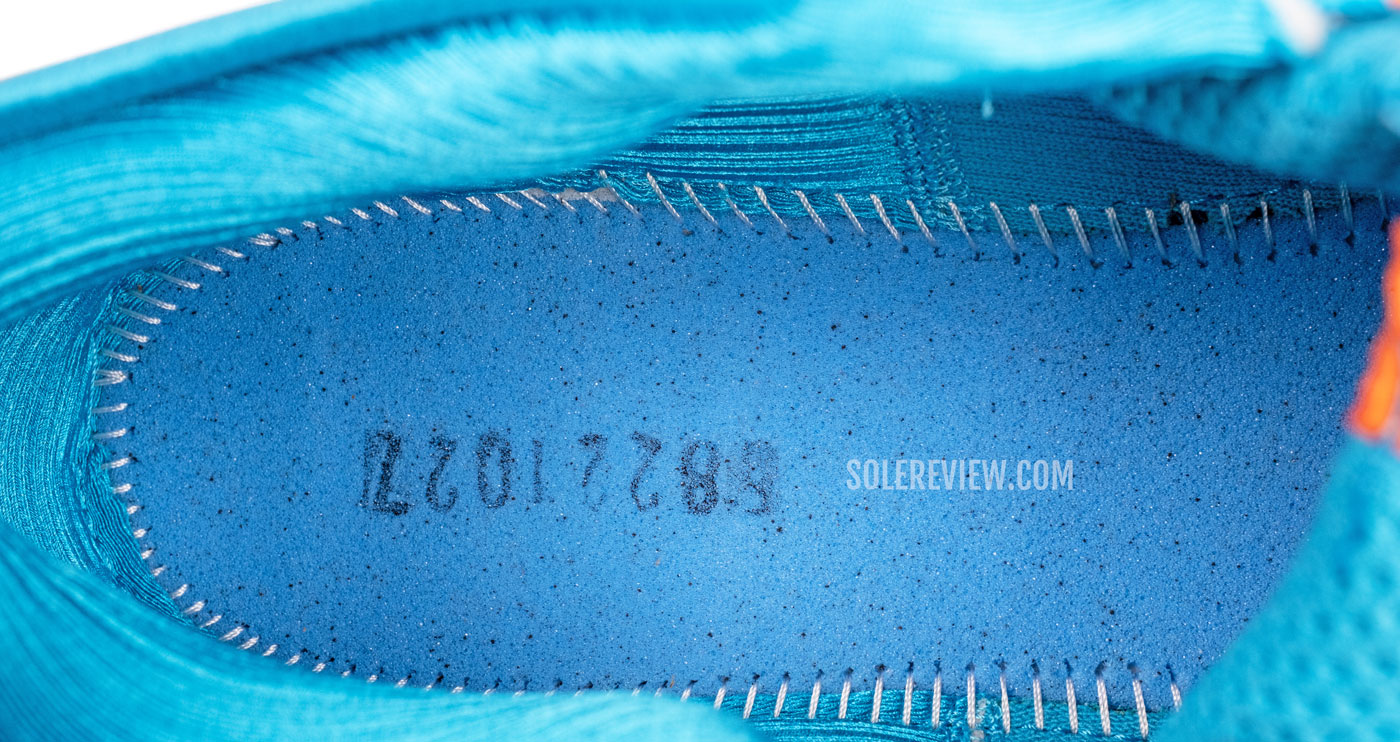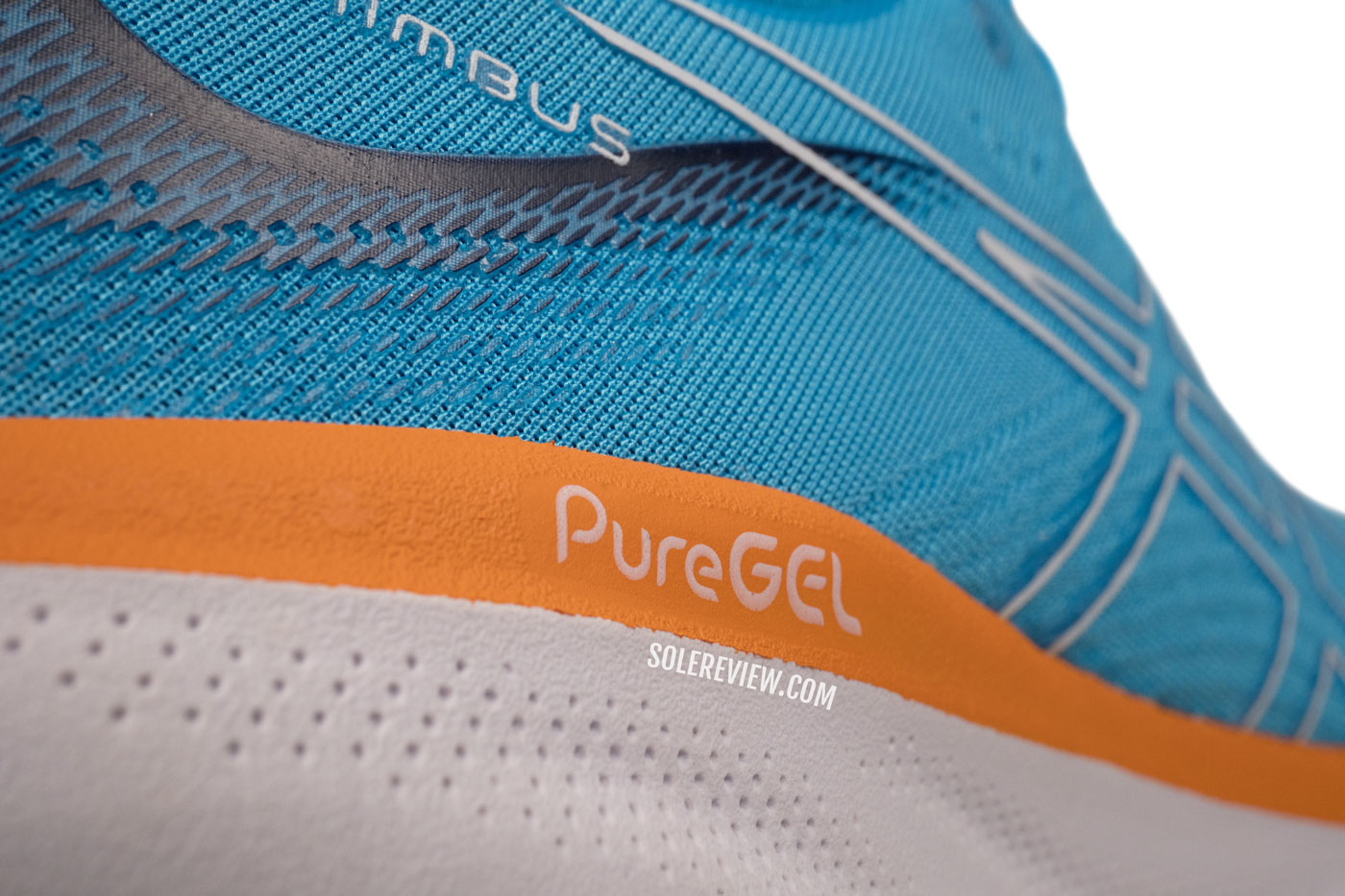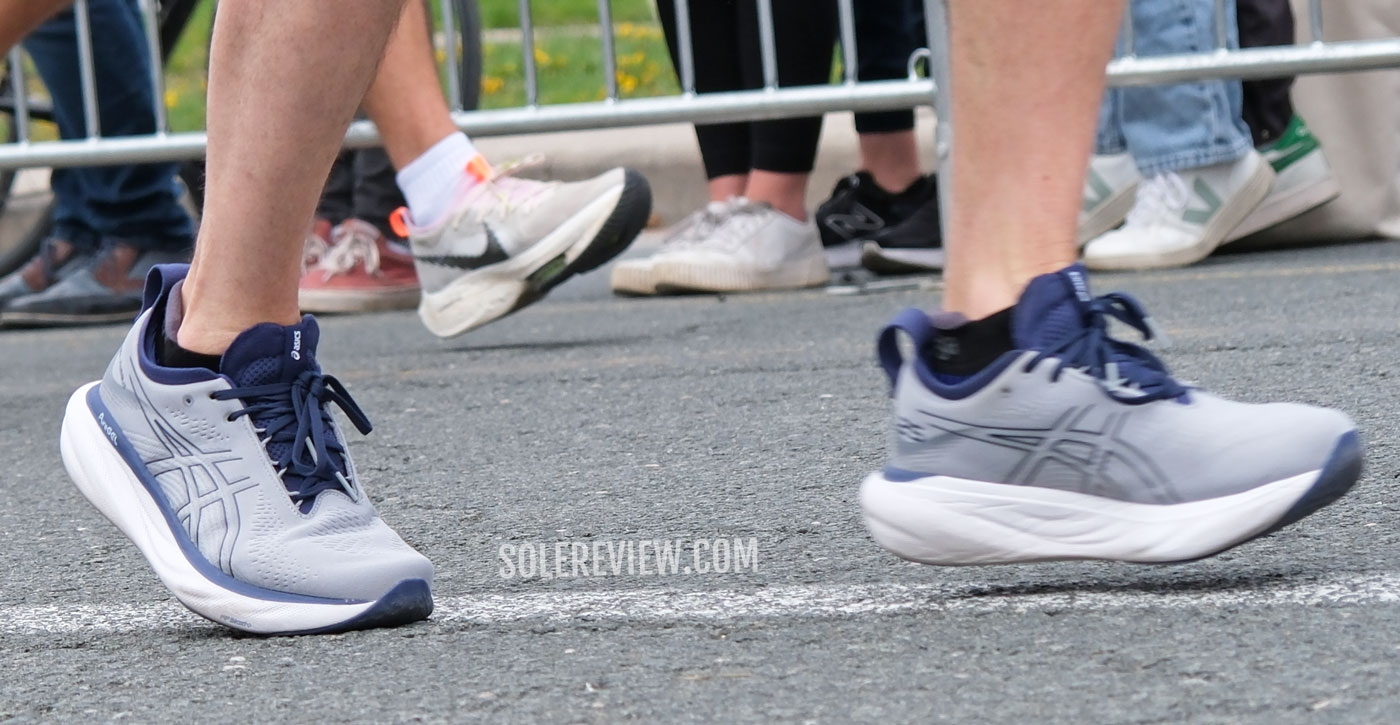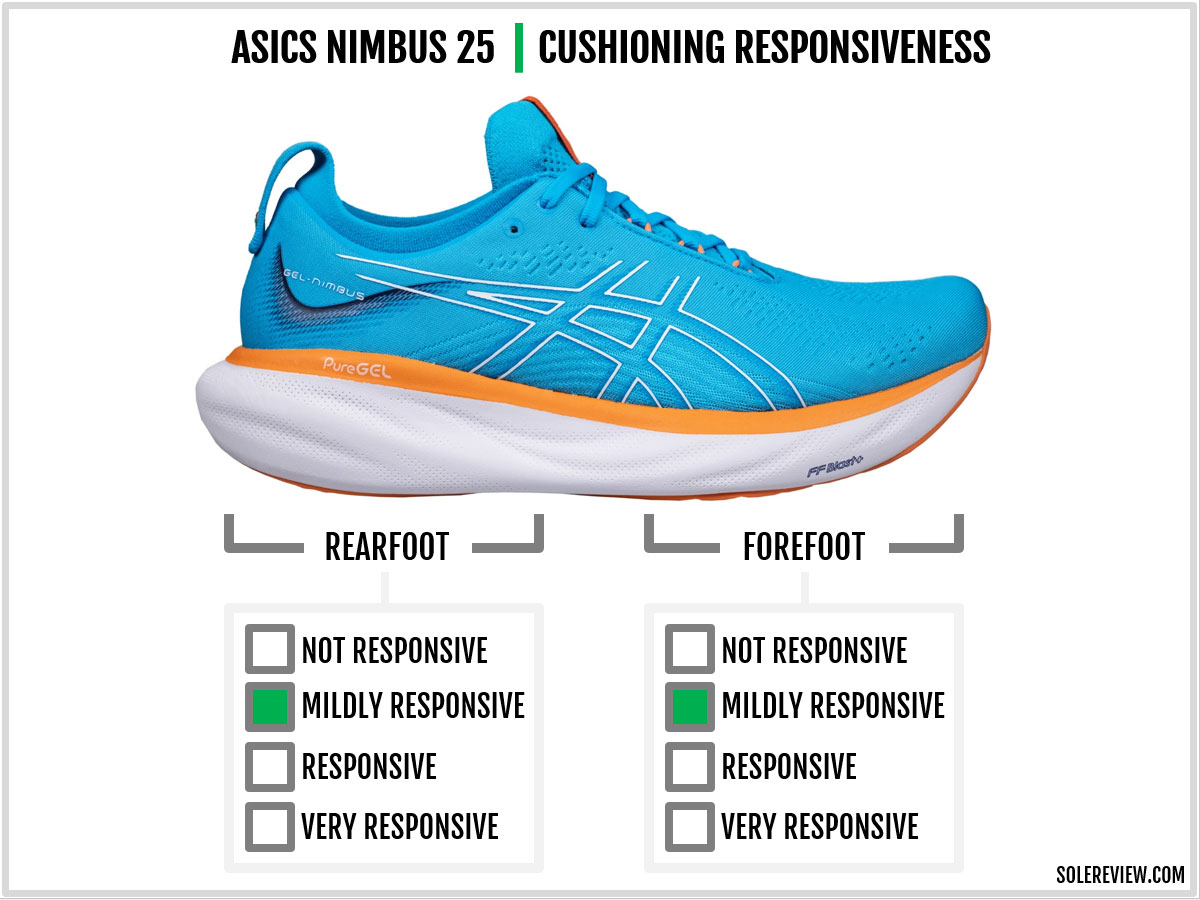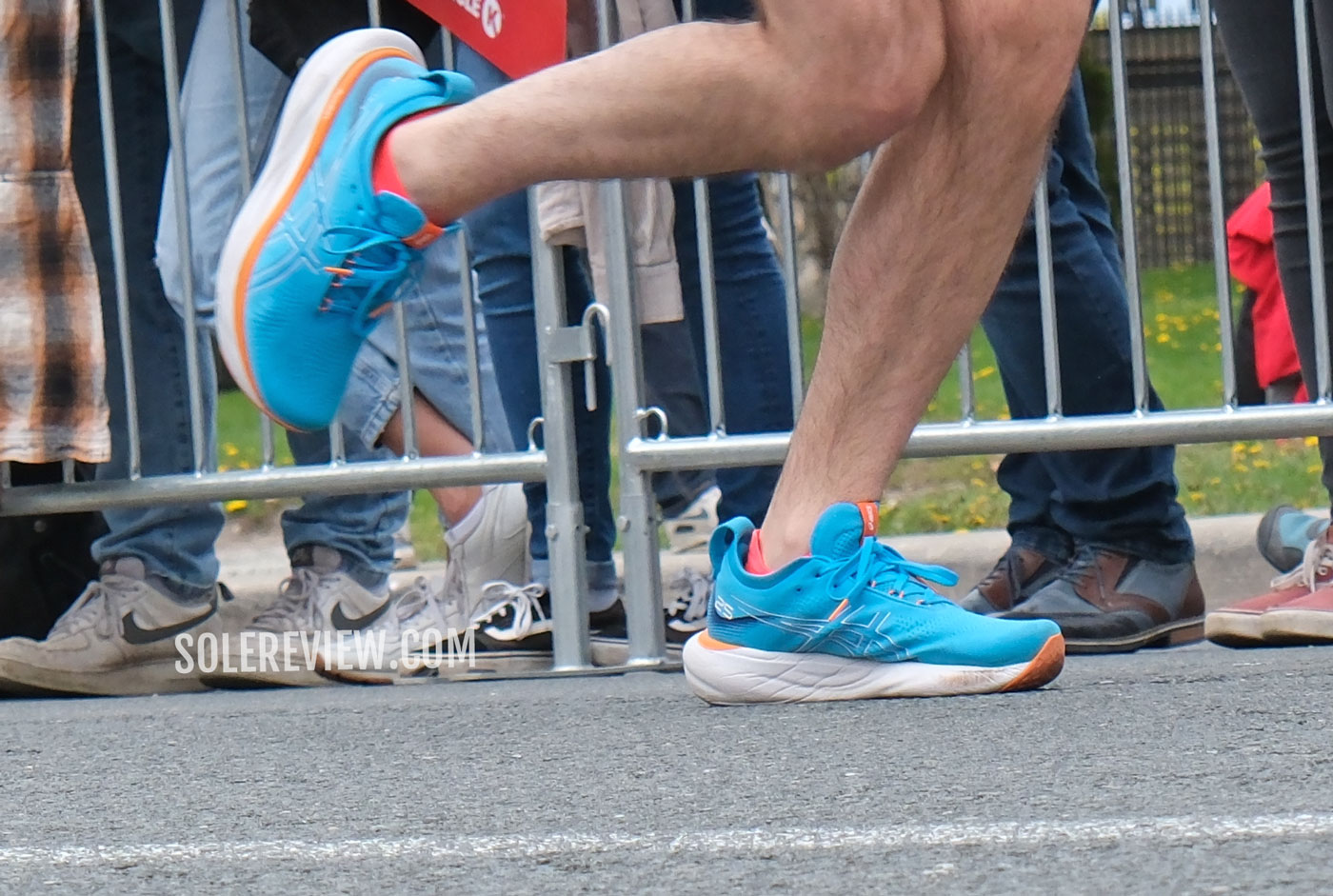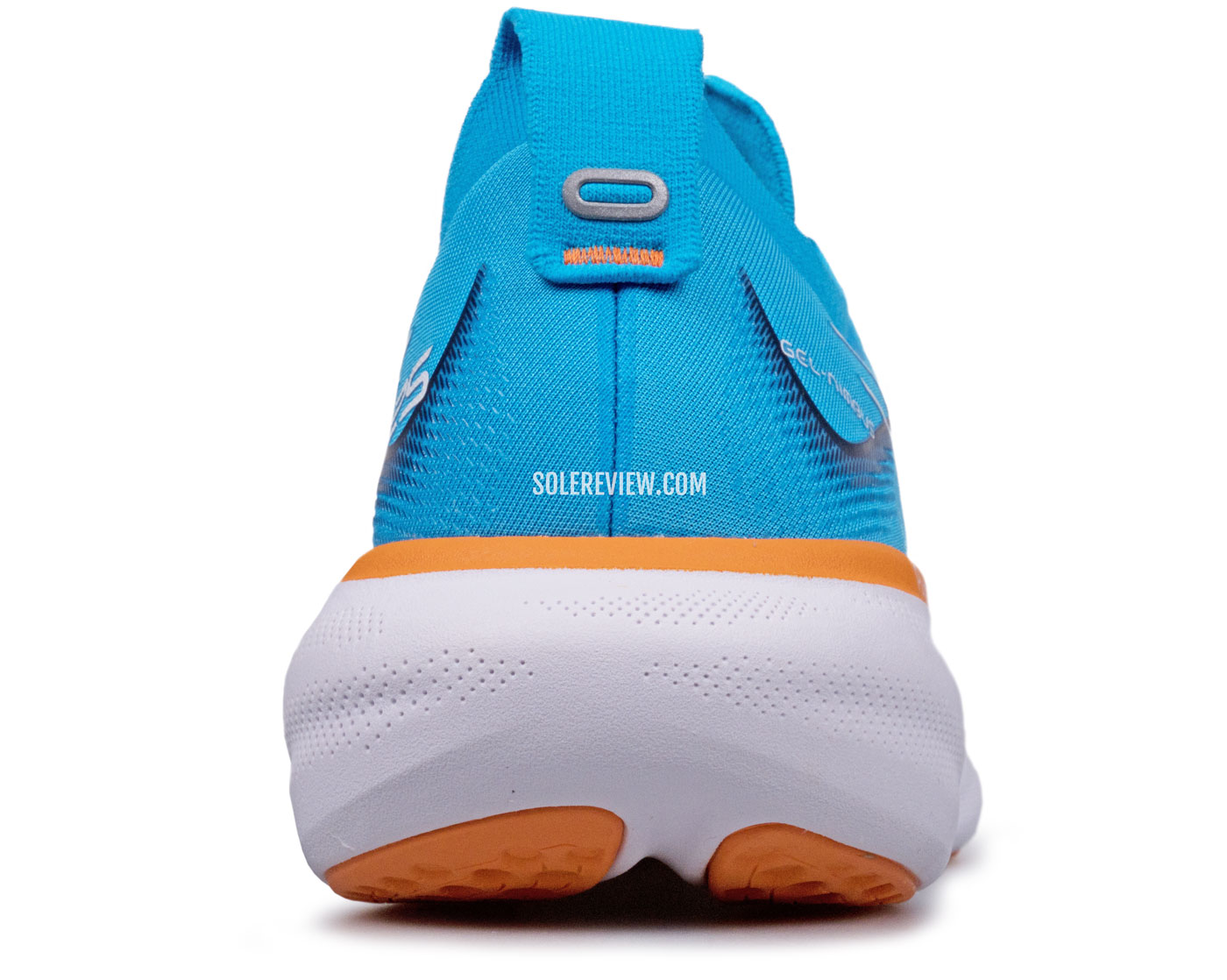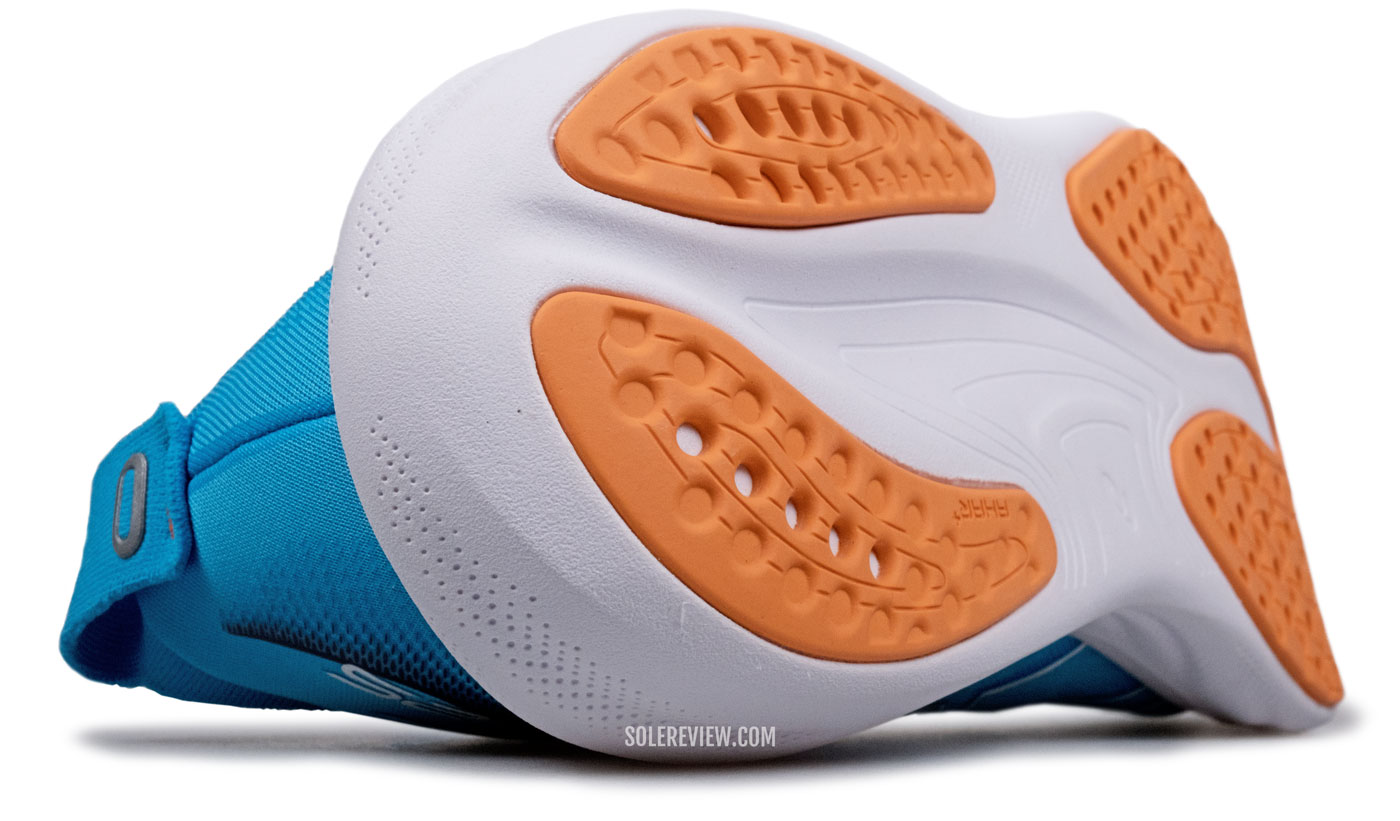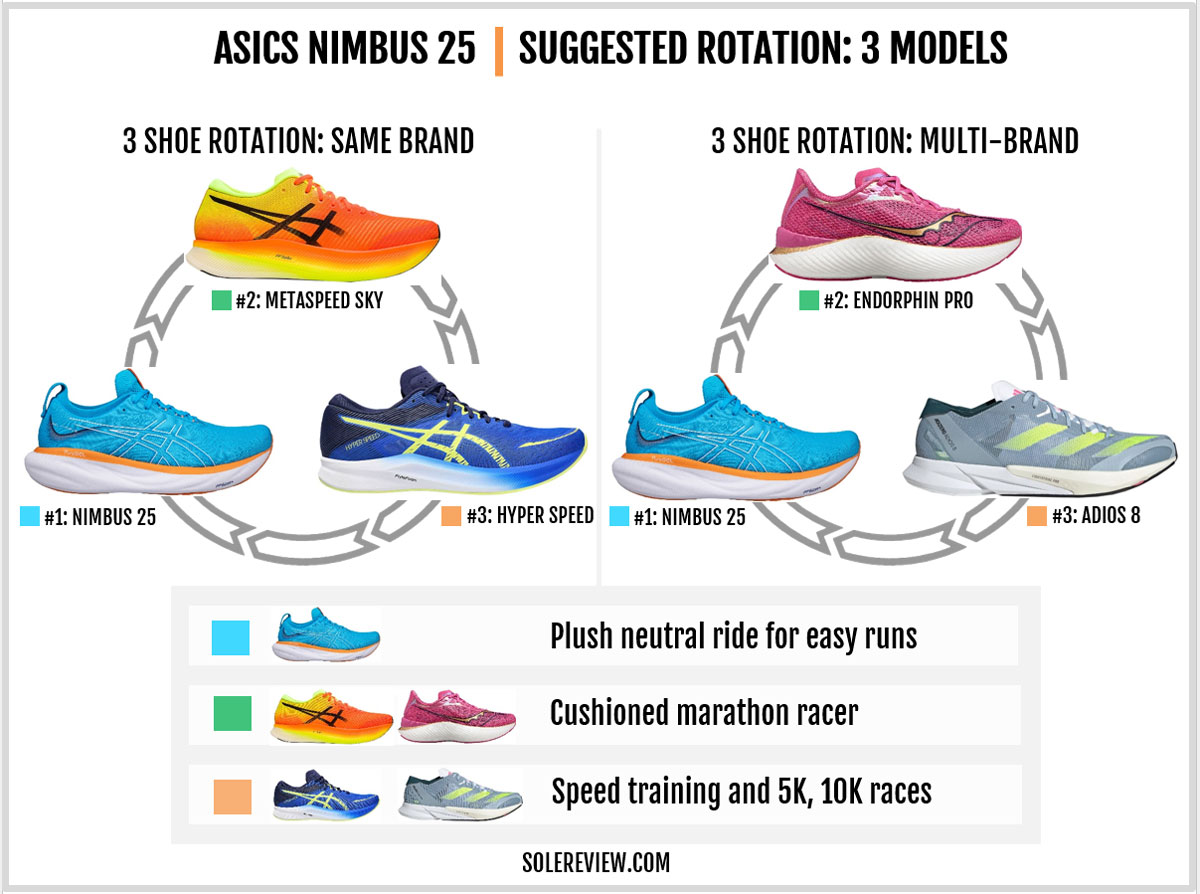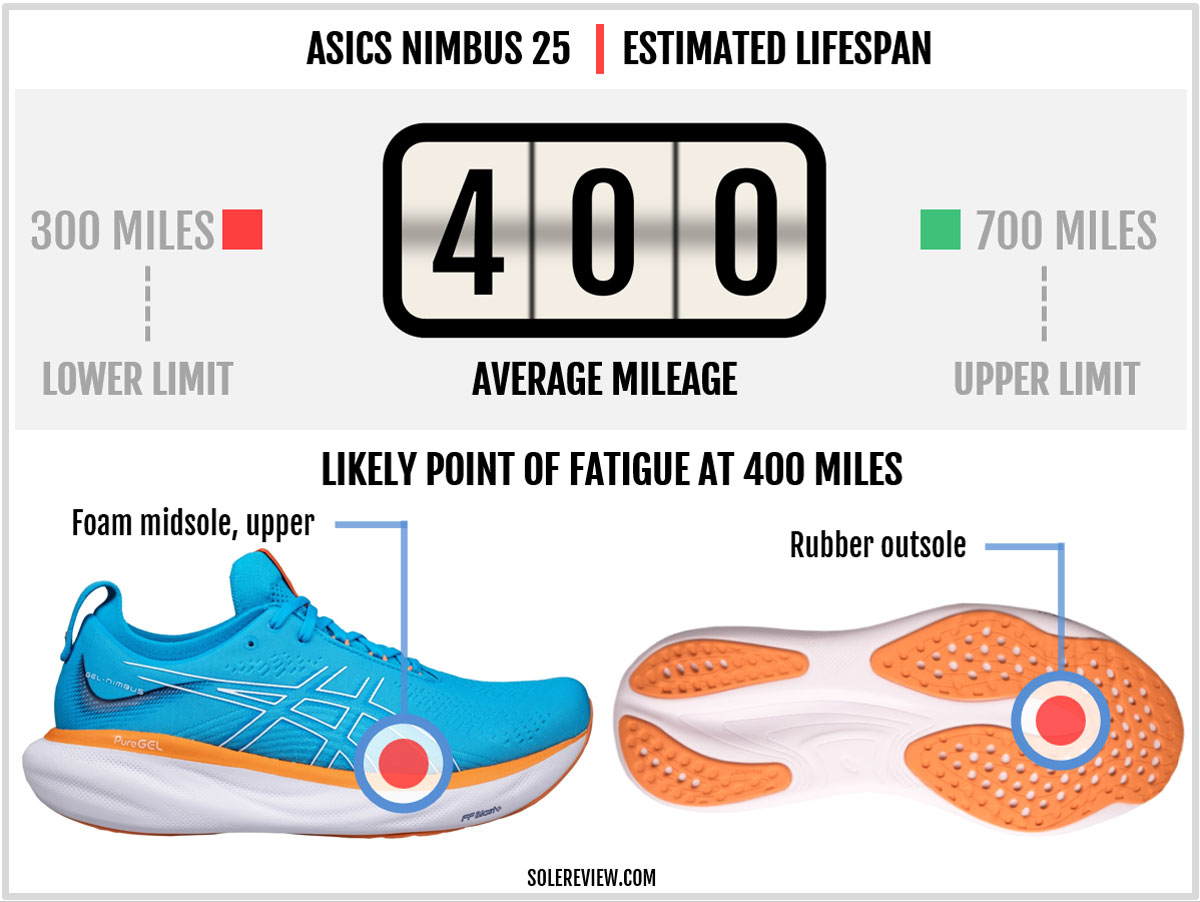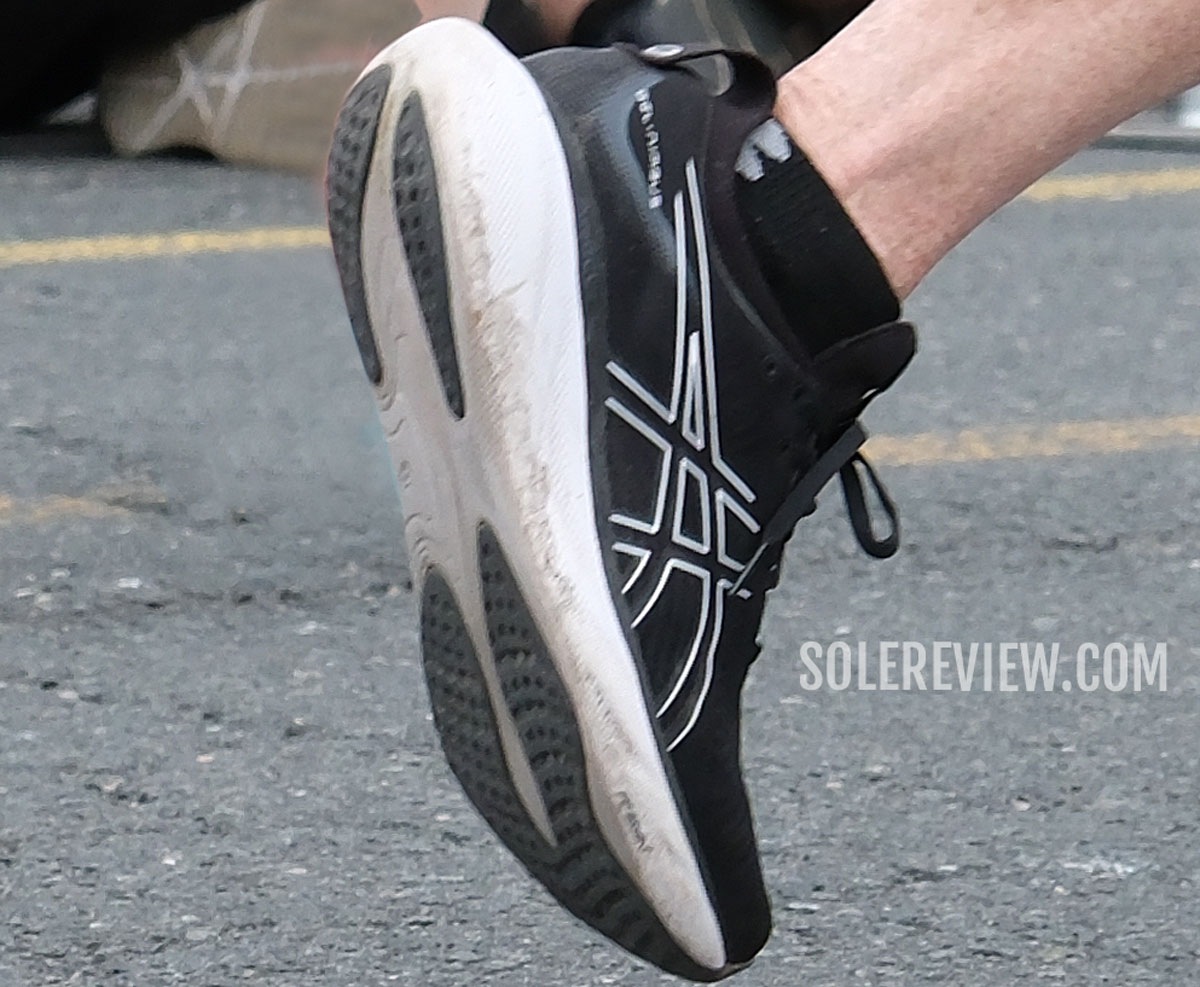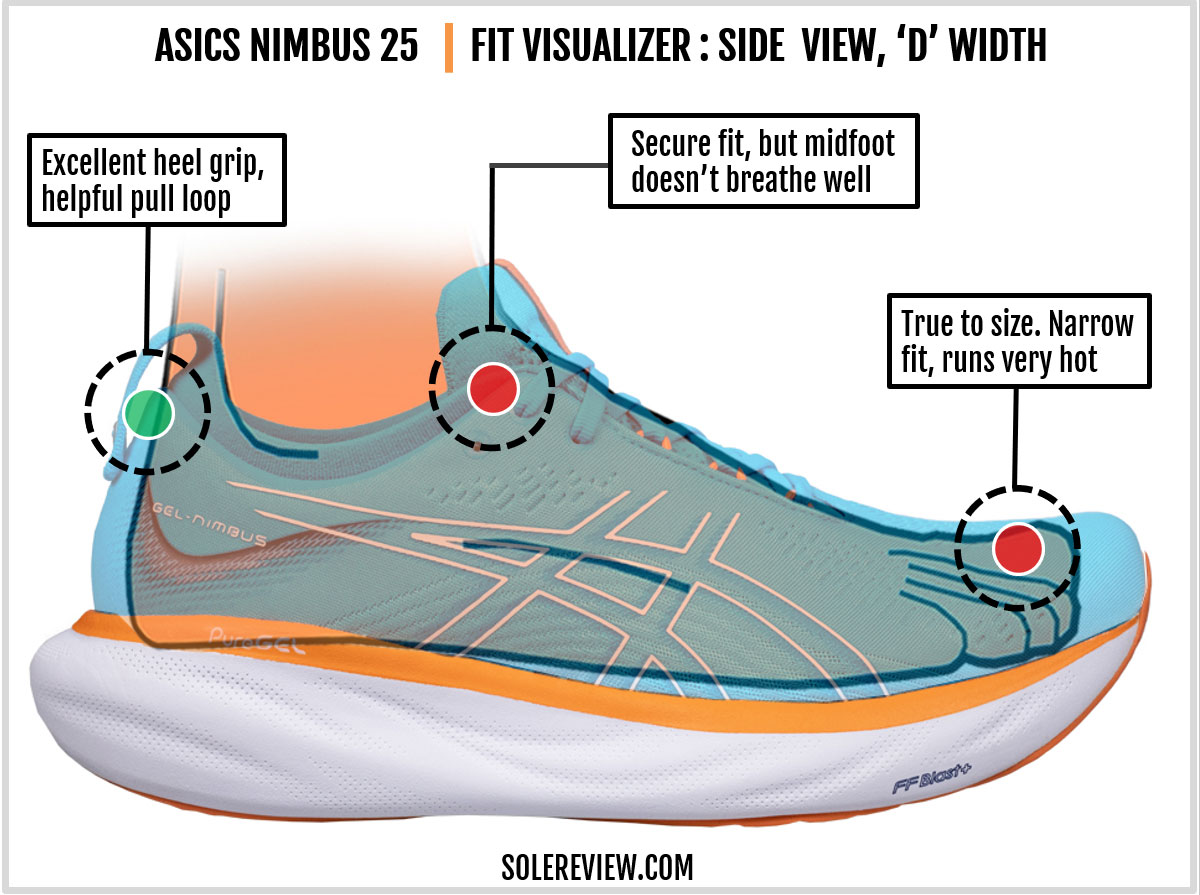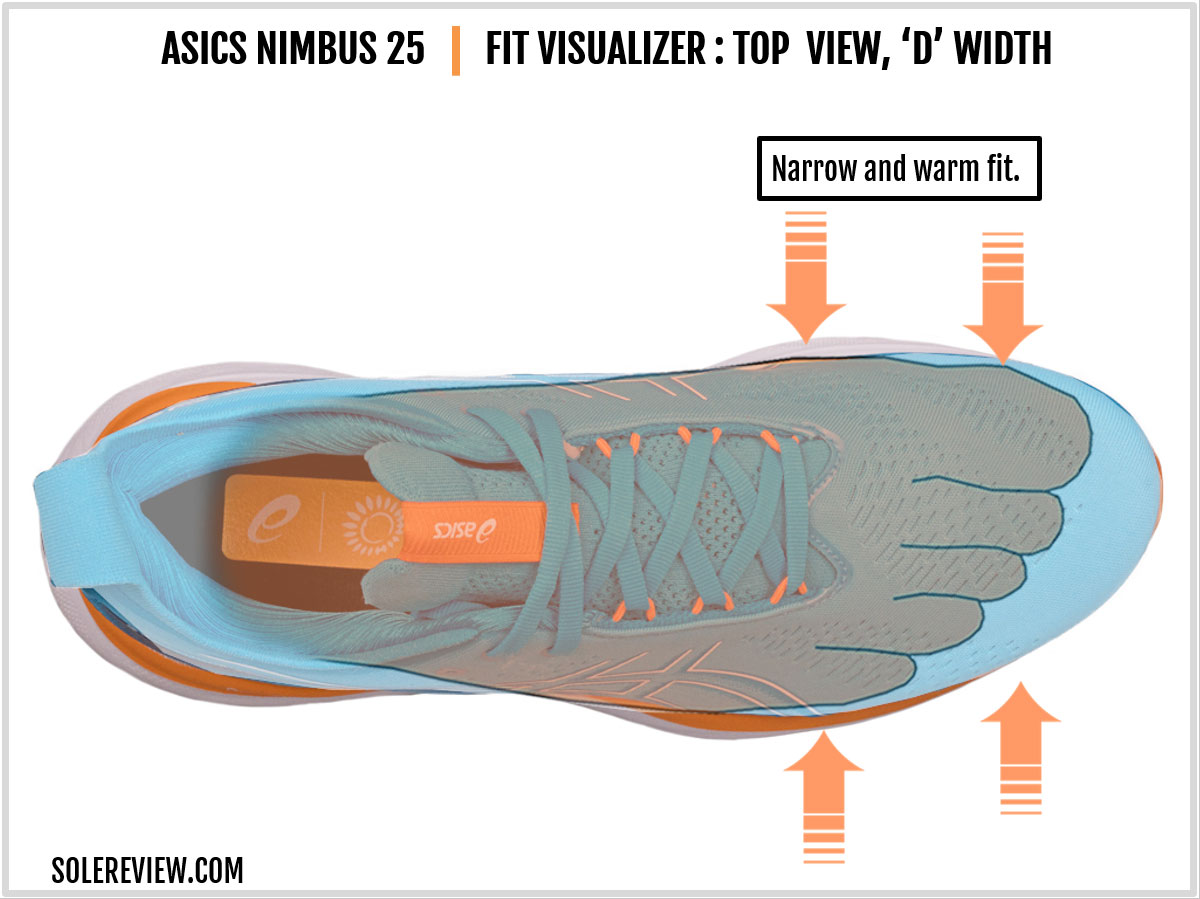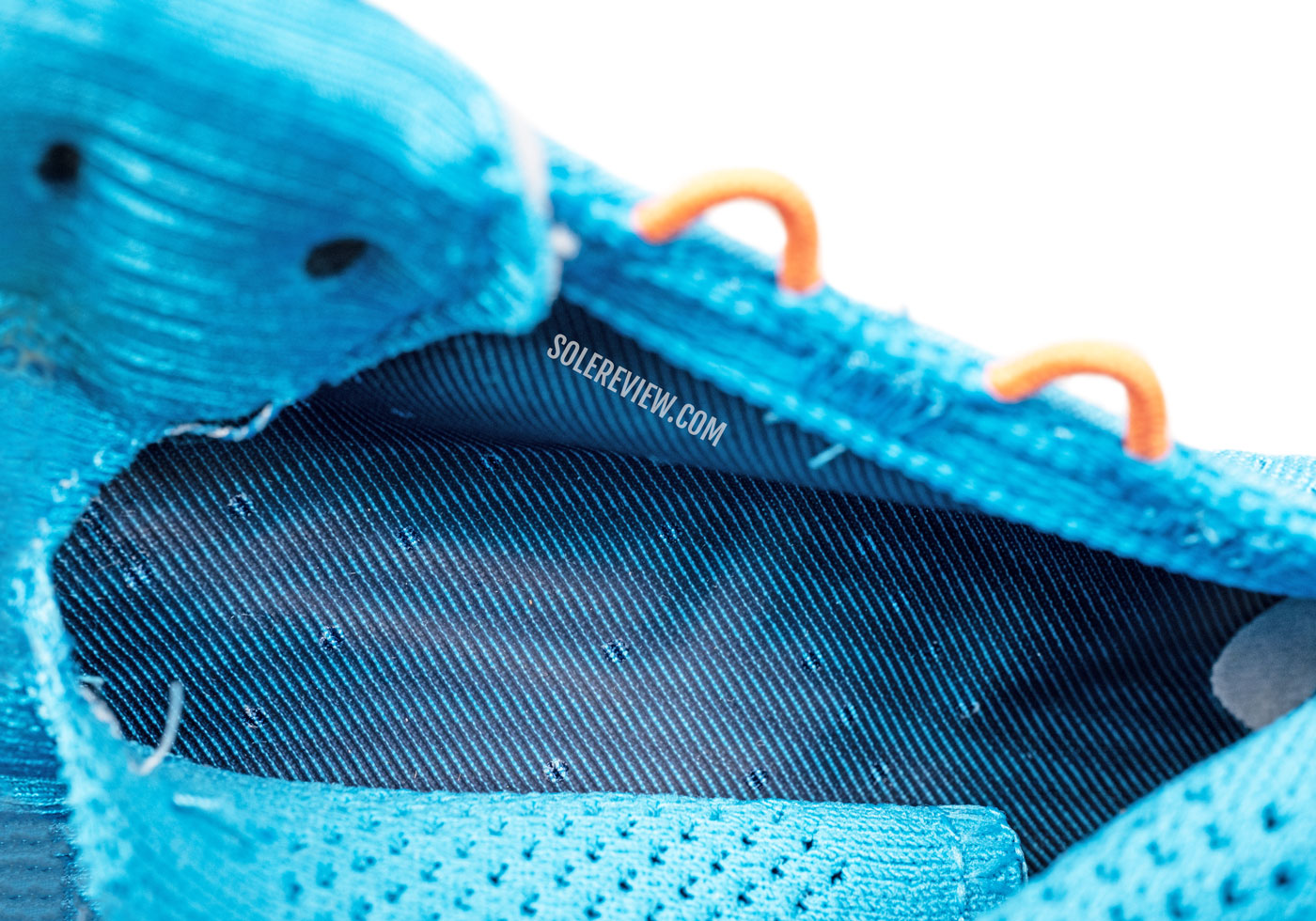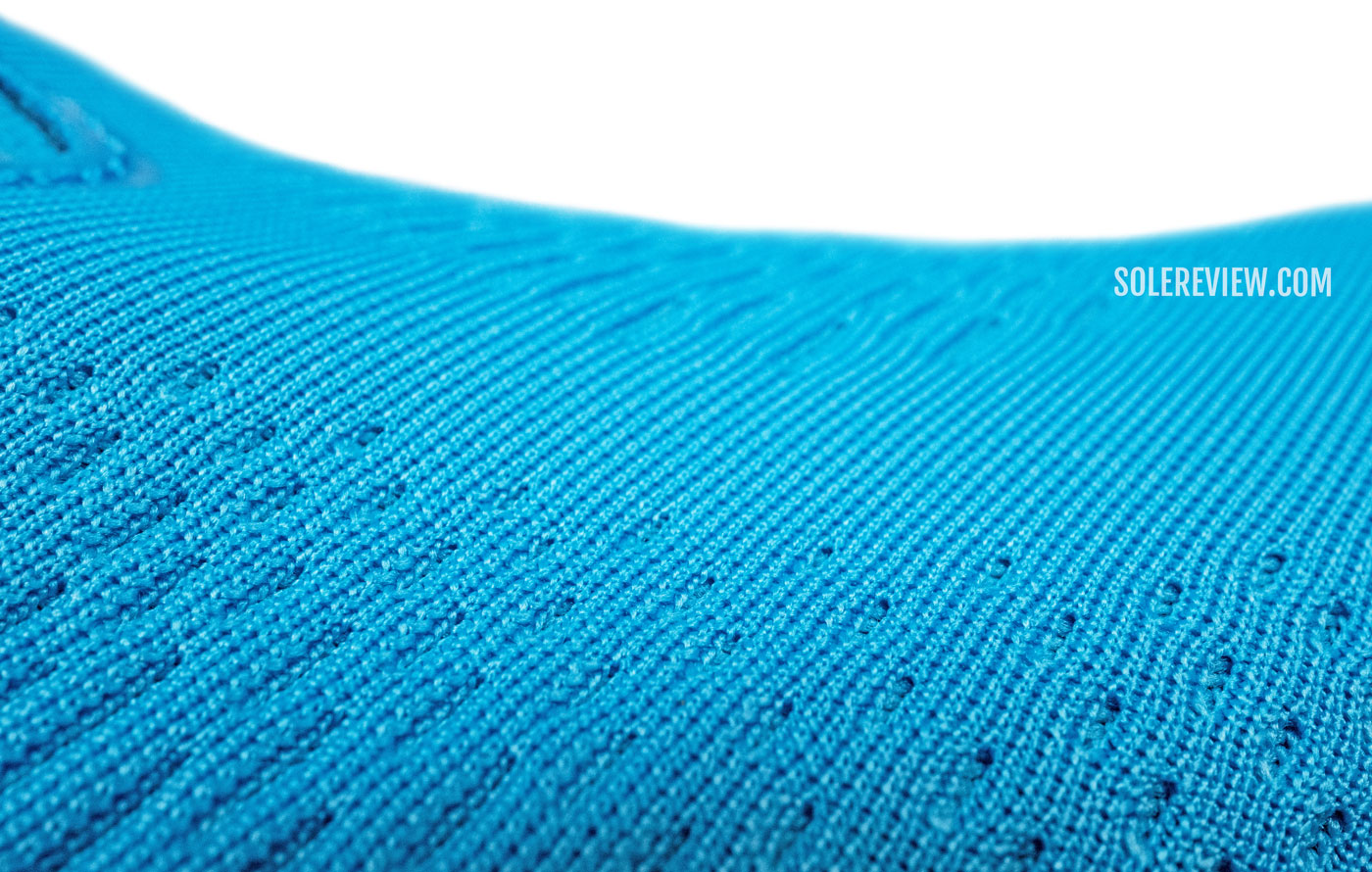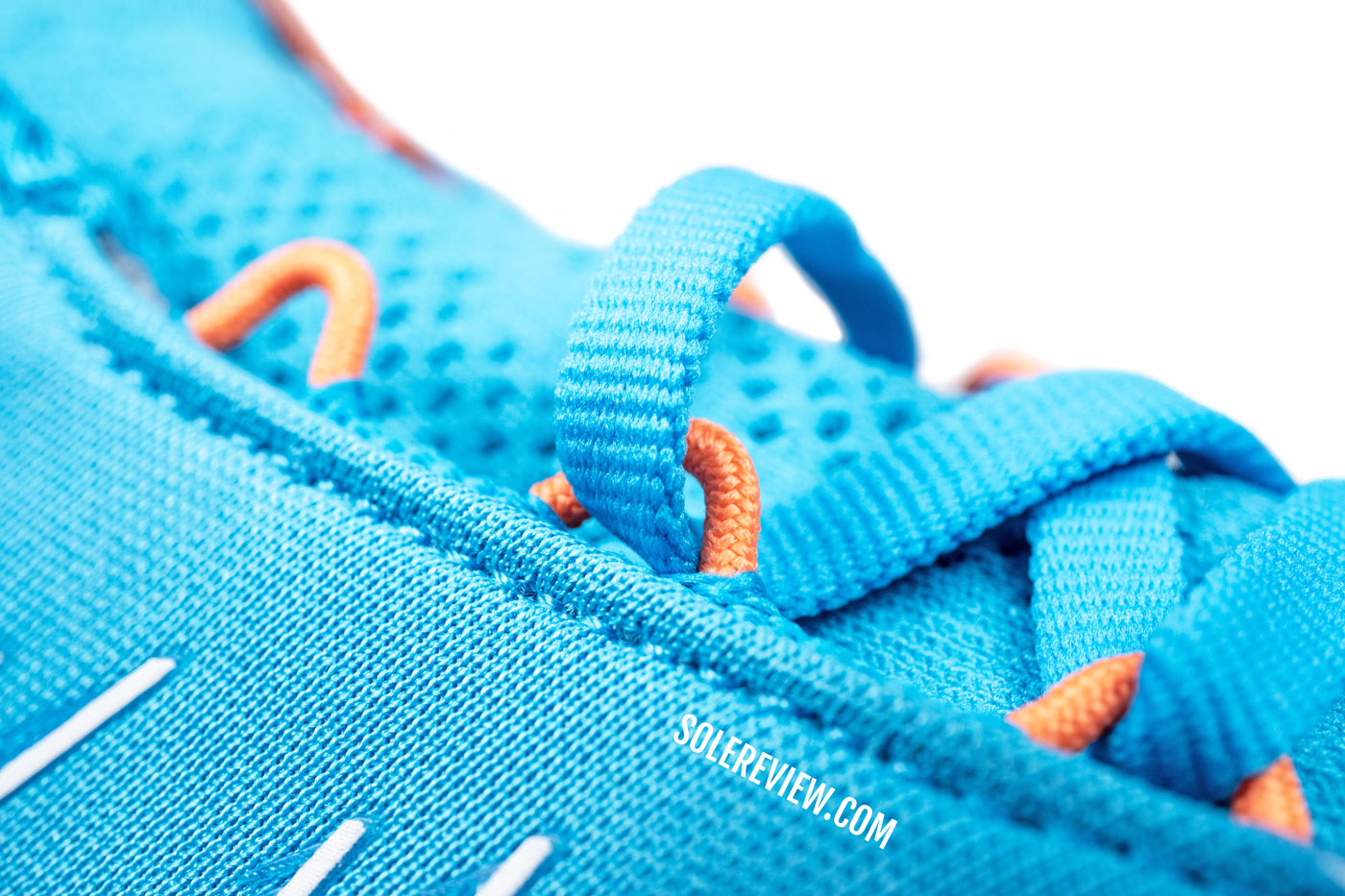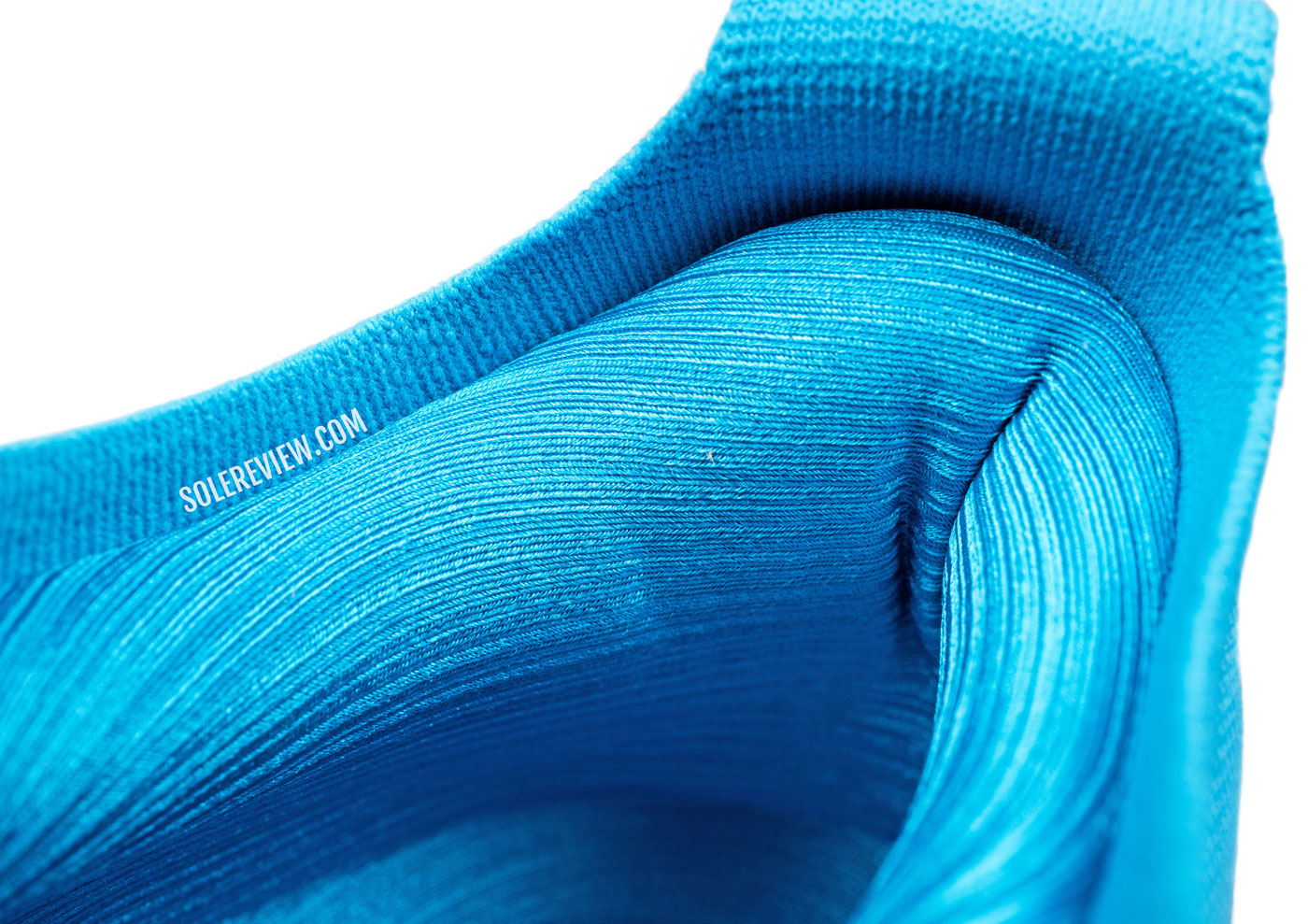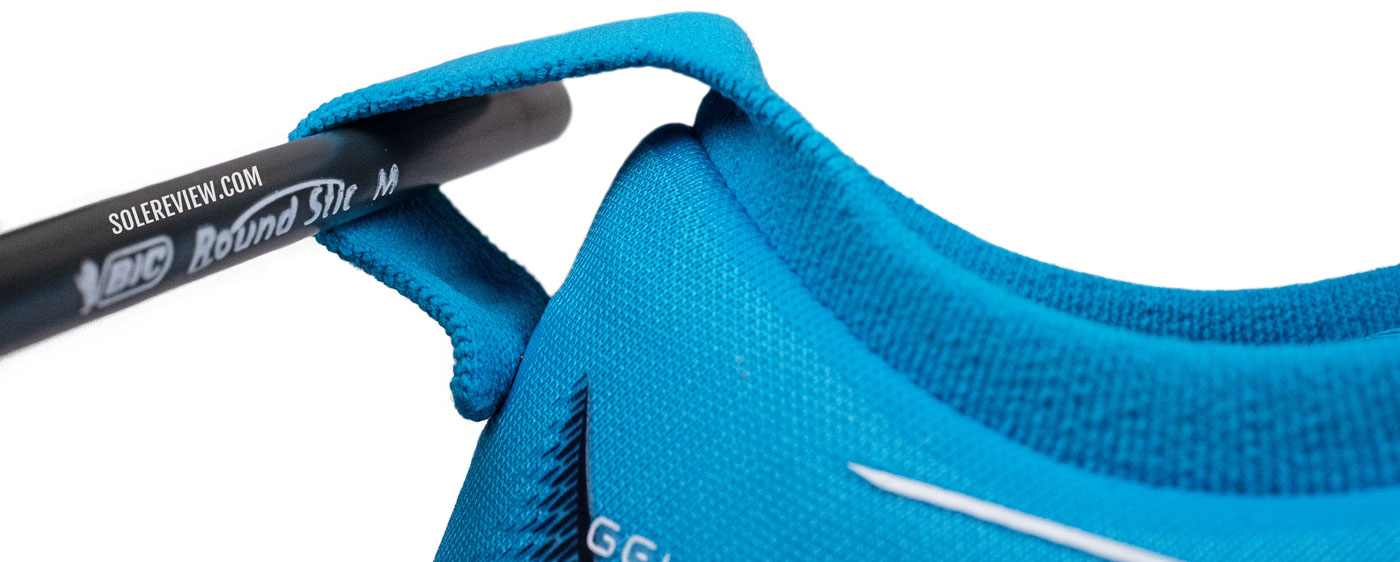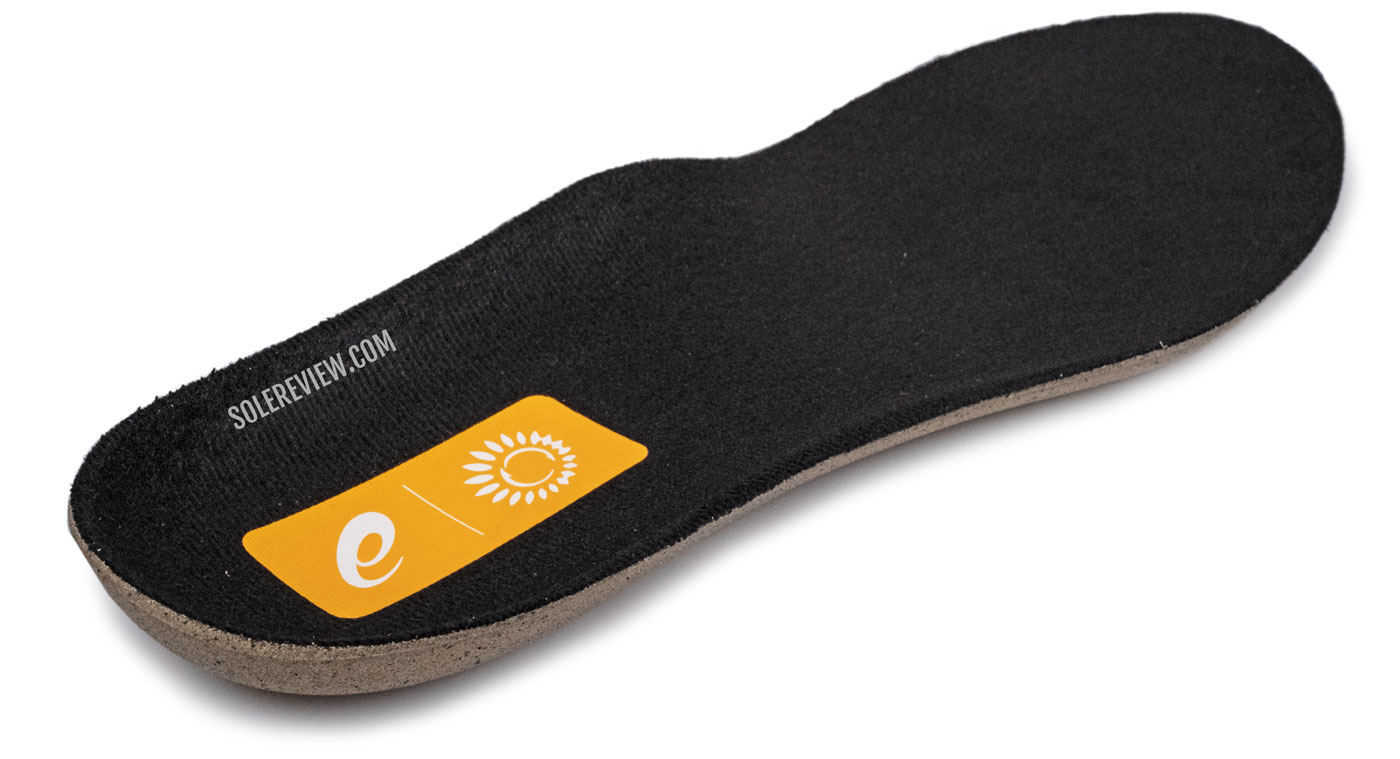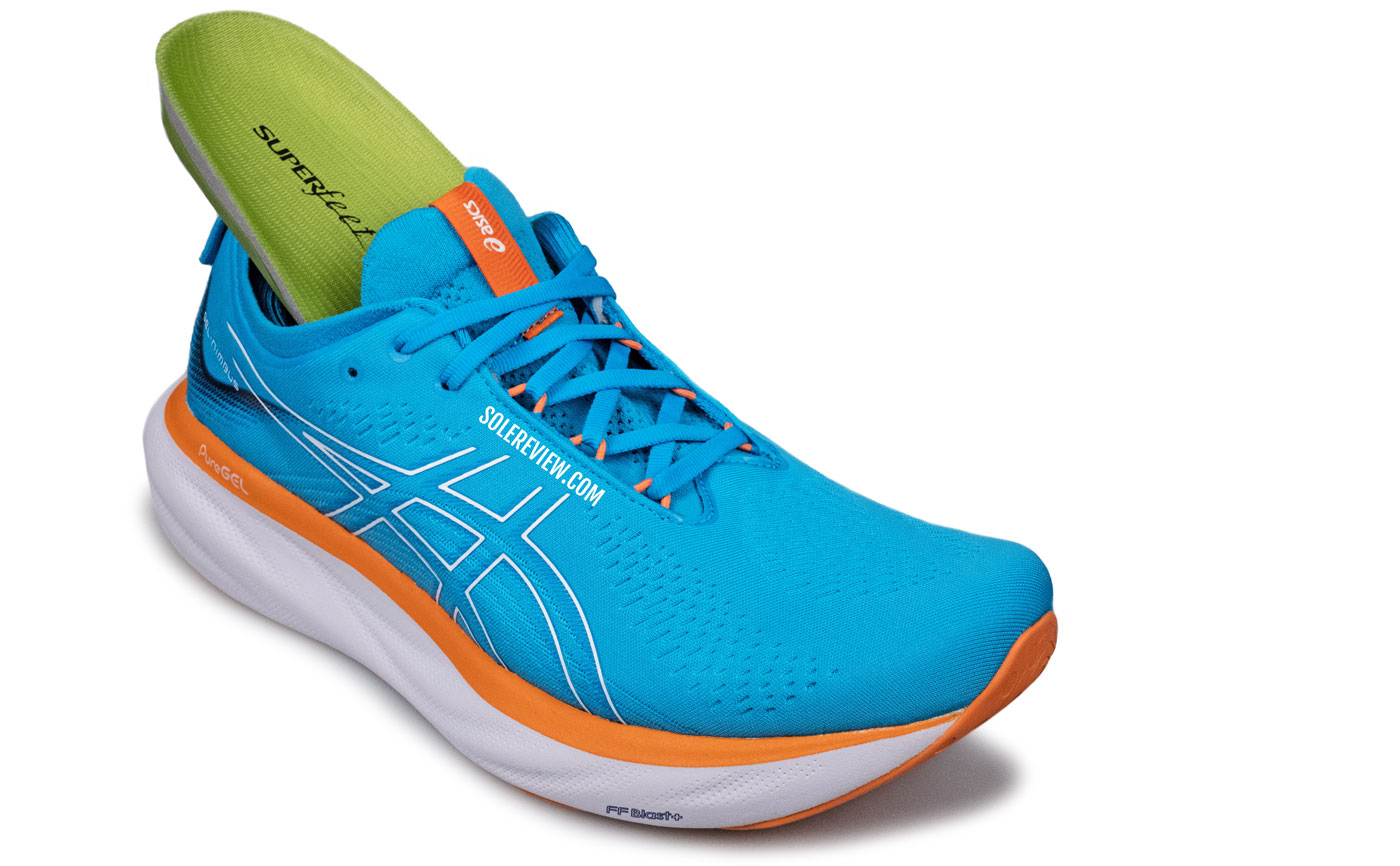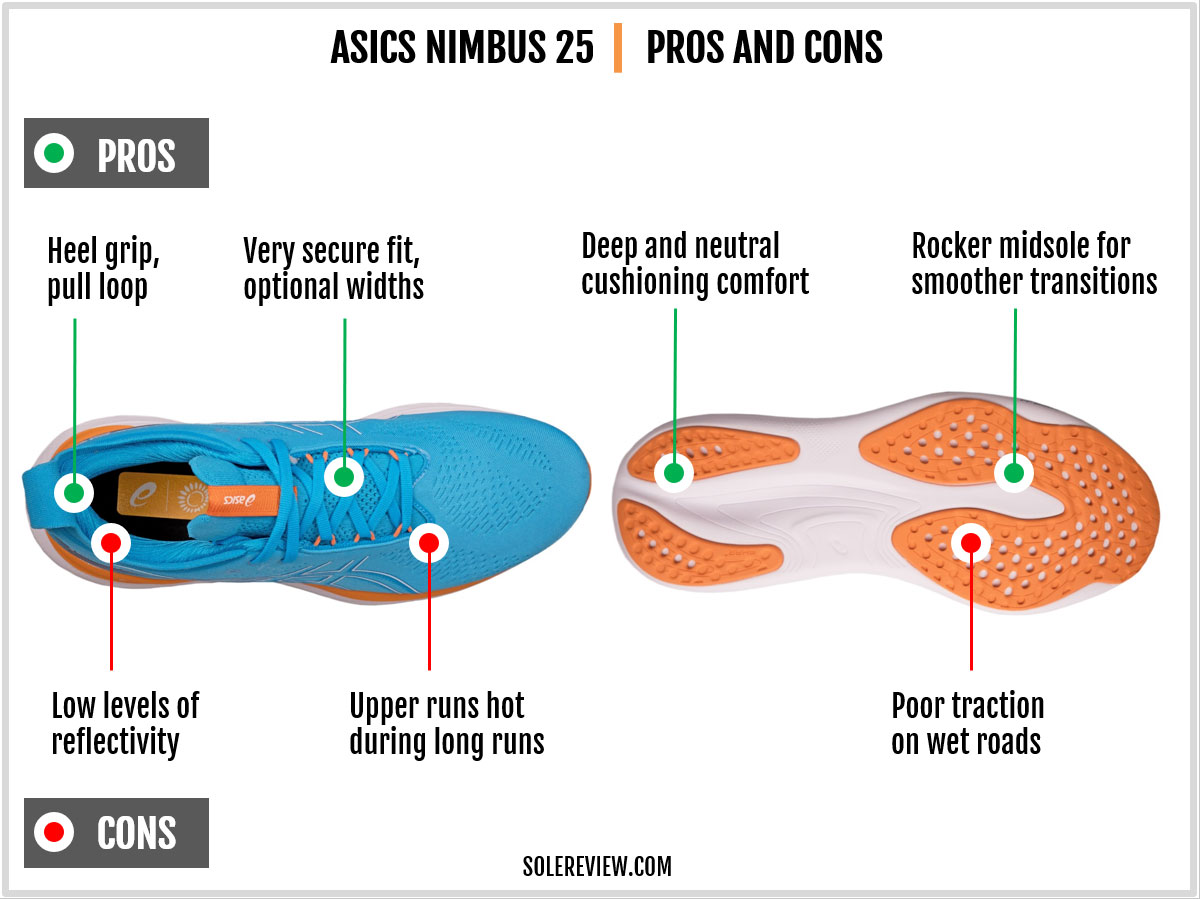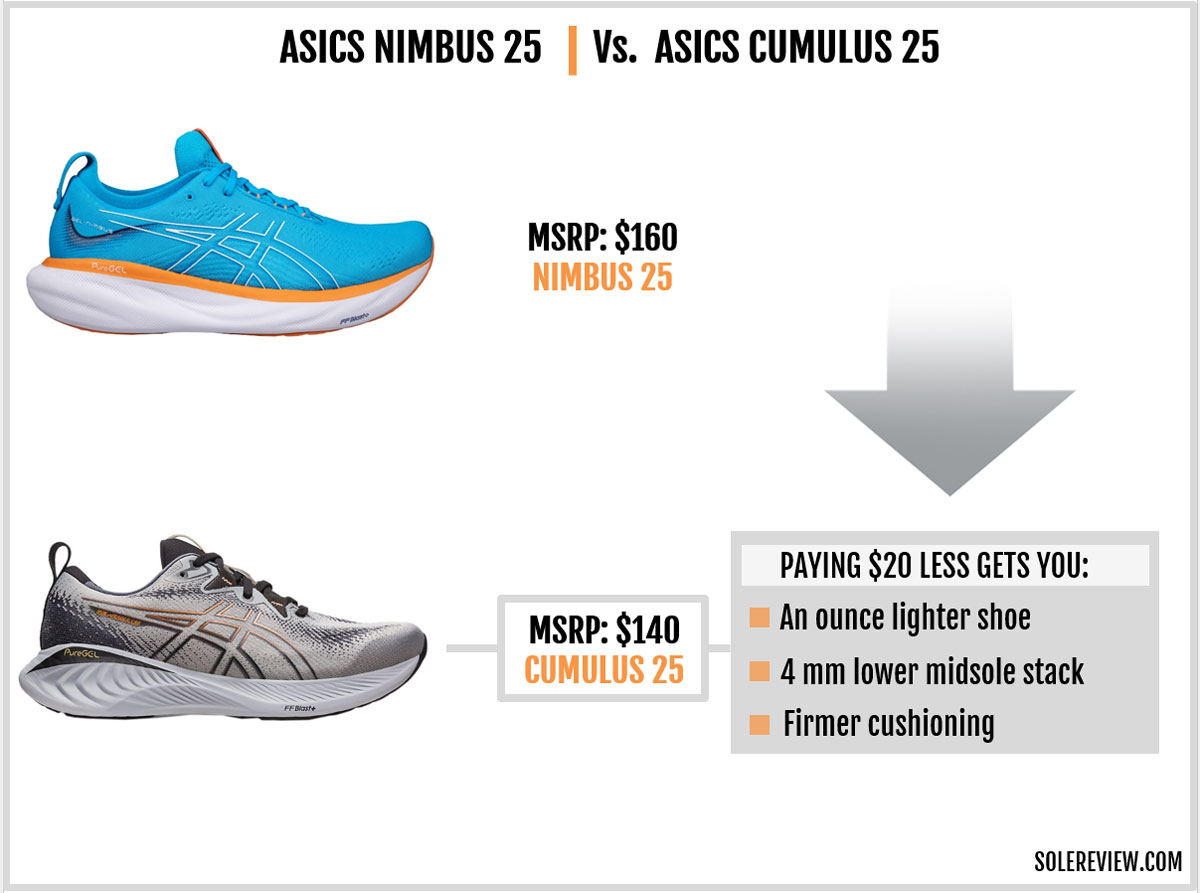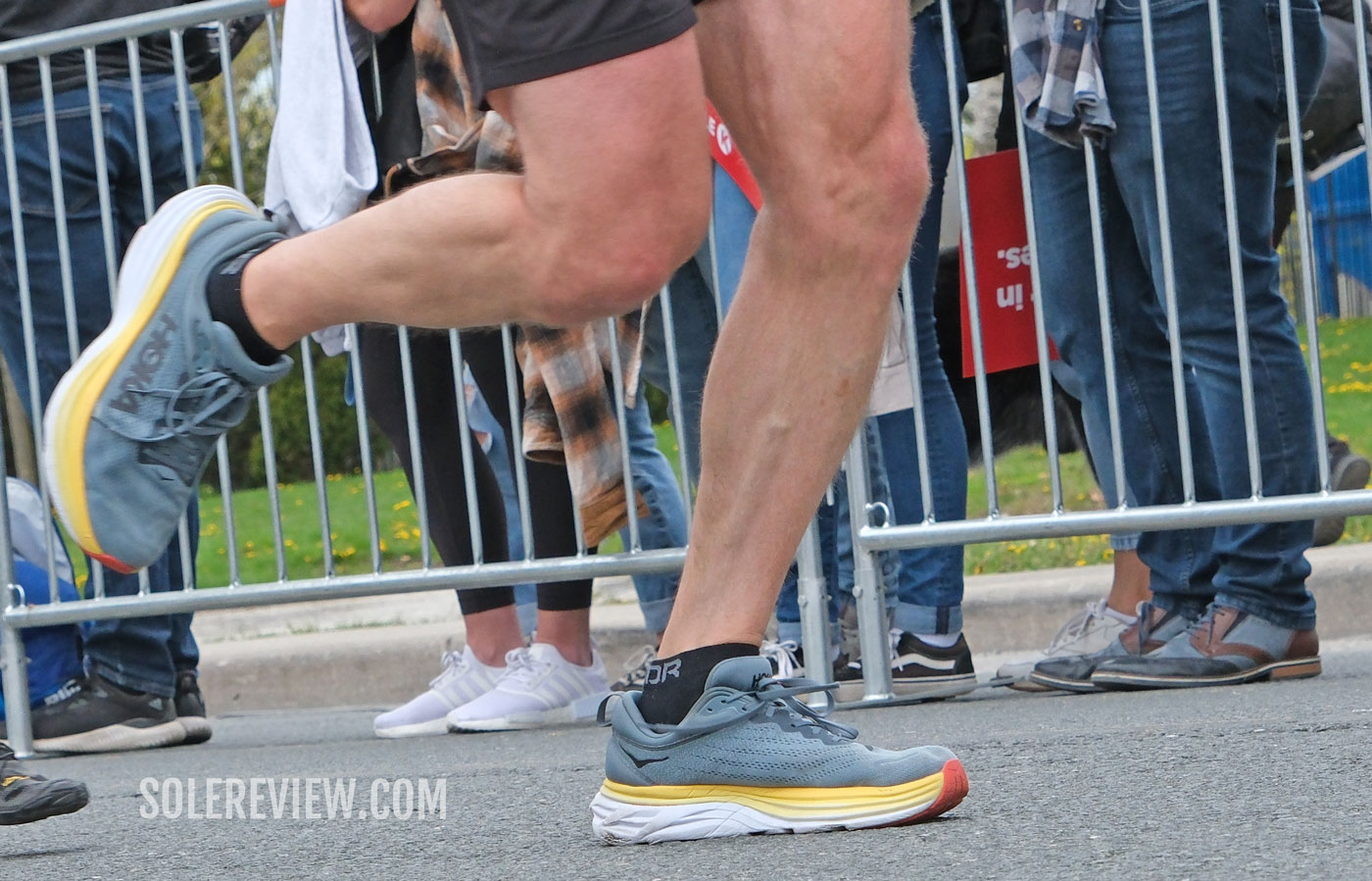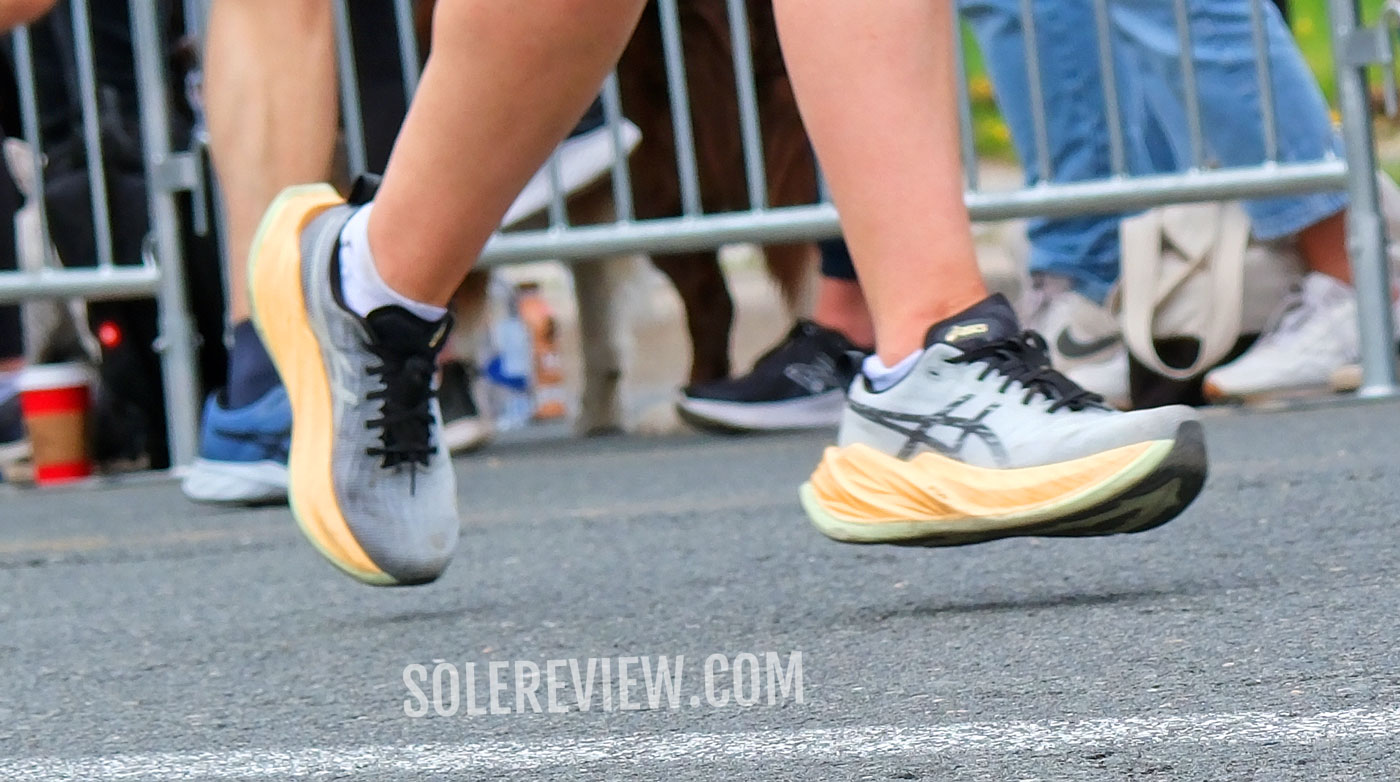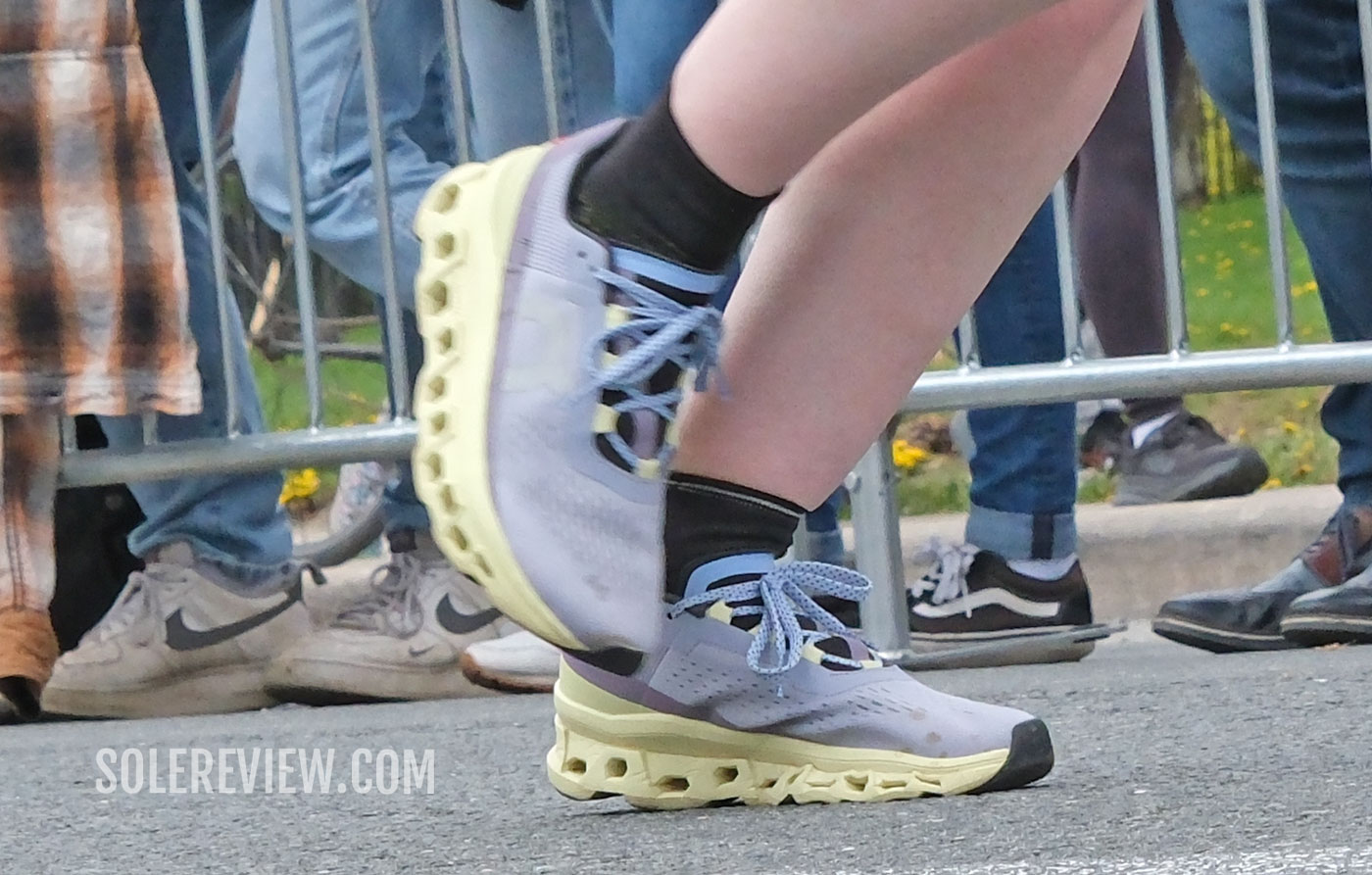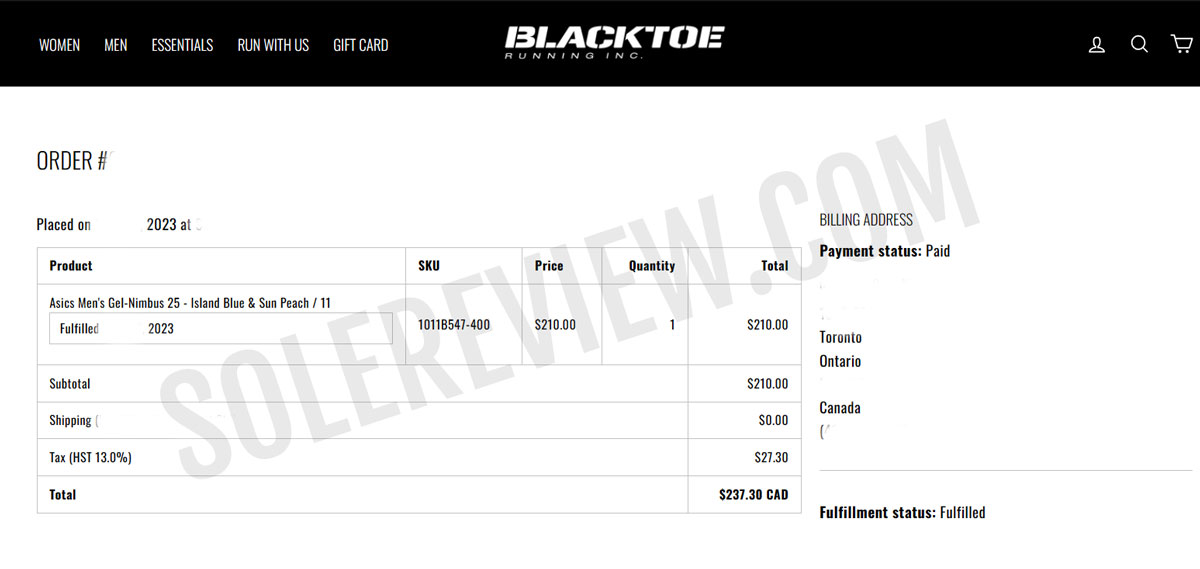
For this review, Solereview paid the full retail price for the Asics Nimbus 25. The amount is in Canadian Dollars.
In this review:
SUMMARY AND VERDICT
The Nimbus 25 is the softest it’s ever been, and the Nimbus Cloud metaphor finally means something. Also, it’s nothing like the Nimbus 24. The sudden evolution of the Nimbus 25 is drastic, so how did it get here?
A few years ago, Asics surprised everyone with the Nimbus Lite and Kayano Lite. Both the shoes were named after the popular Gel Nimbus and Kayano, but introduced a brand-new platform that had little in common with the legacy models.
The Lite versions were based on a Flytefoam midsole without the trademark Gel or plastic shank. Except for the internal Gel units, the foam midsole was single-density. And it wasn’t just the midsole; the upper was also snugger. Those changes produced a different ride and fit character than what Asics loyalists were accustomed to.
In hindsight, it was a great way to explore uncharted waters. The new ‘Lite’ models were a refreshing take on the premium neutral and stability concept, and had the potential to one day replace the standard Nimbus and Kayano.
And that’s exactly what Asics has done with the Nimbus 25 and Kayano 30.
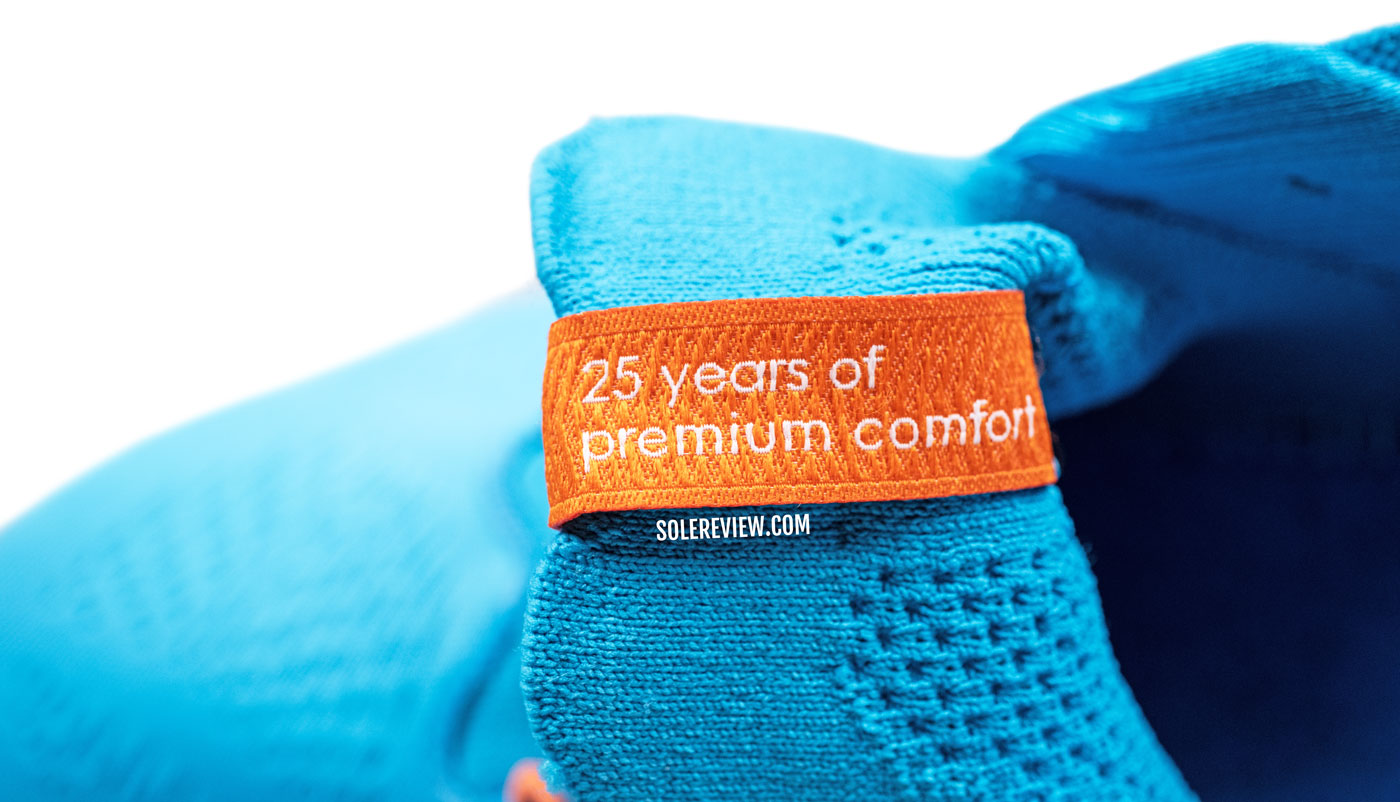
The Nimbus 25 borrows a few bits from the Nimbus Lite and Nimbus 24. But make no mistake – this is a brand-new product with minimal historical baggage.
The Nimbus 25 isn’t heavily influenced by either the Nimbus 24 or Nimbus Lite 3. While there are a few bits that feel familiar, they are not overpowering. Also, the Nimbus 25 has a few things that neither the Nimbus 24 nor Lite had. For example, the midsole is much taller and wider, and also acquires a rocker forefoot along the way.
The cushioning is substantially softer than any of the prior Nimbus versions. According to Asics, the Nimbus 25 has stack heights of 41.5 mm (heel) and 33.5 mm (forefoot). That’s as deep as it gets, and the softness is delivered in a controlled fashion. There’s a sense of rubbery softness that feels very satisfying – the cushioning doesn’t feel one-dimensional.
These specs leave no ambiguity about the Nimbus’s place in the running shoe ecosystem – this is a max-cushion running shoe with cushioning comfort available in wholesale. It’s what the Hoka Bondi 8 should have been, but sadly isn’t. Or, the Nimbus 25 is what the New Balance Fresh More should have been – a max-cushioned trainer with a sense of purpose and more fun ride.
The cushioning depth isn’t the only highlight. The rocker forefoot and supportive Flytefoam midsole make the shoe lively. The rocker profile allows quick transitions to happen, so maintaining 4:30 min/km (7:00 min/mile) speeds doesn’t feel like a chore.
The top-to-bottom redesign of the midsole is a step in the right direction. The Flytefoam midsole is also very supportive, regardless of the runner’s weight and pronation angle.
There are two flaws the Nimbus 25 can do without.
The first problem is downright unpardonable – the upper is unbearably warm and traps heat during long runs. In our upper design section, we explain the reasons, but this is a glaring drawback in a shoe that’s comfortable enough for marathons.
The Nimbus 25 is a good running shoe for the cooler months, but we’ll pass during the summers. Our ‘average’ rating will divide opinions, but it is warranted.
The second drawback is the outsole design. The traction is a downgrade from the previous model, and the grip is sub-par on wet paths. It does okay on dry roads though.
The upper, while true-to-size, also fits narrow, so consider the 2E (wide) or 4E (extra-wide) version for a more accommodating fit.
THE ASICS NIMBUS 25 COMPARED WITH ASICS NIMBUS 24
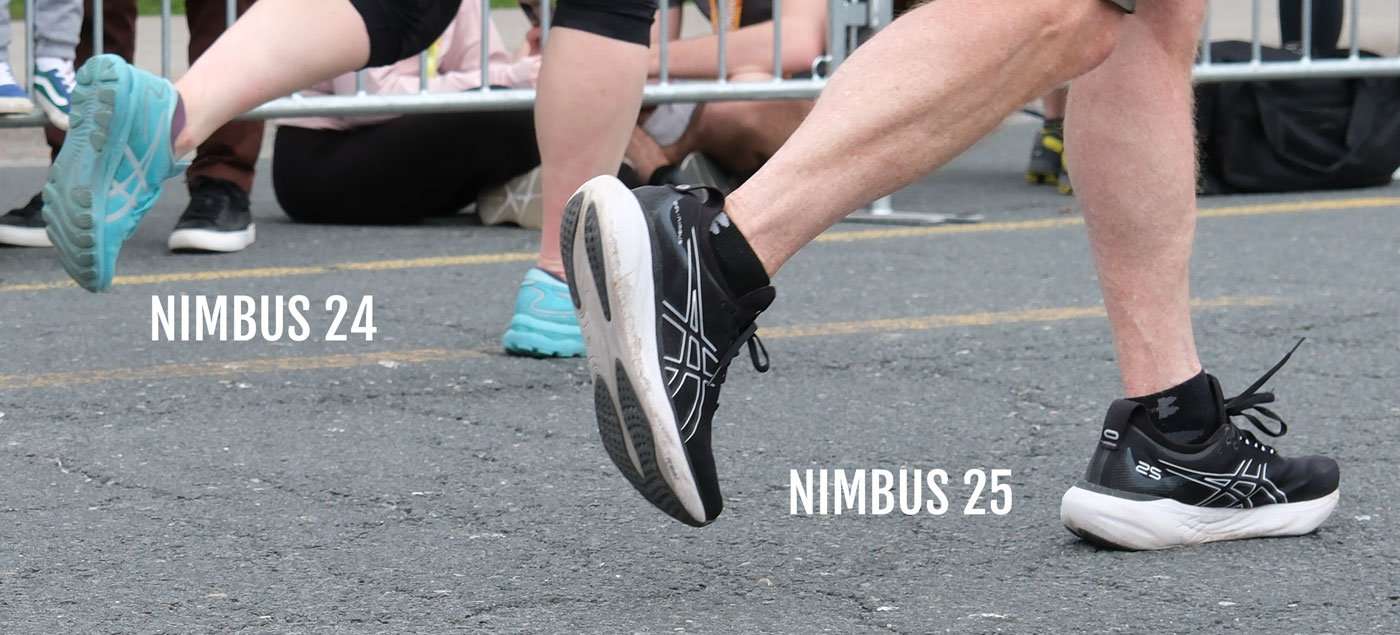
Seen in this picture are the Nimbus 24 and Nimbus 25. The name is the only thing that both shoes have in common.
The Nimbus 24 was merely plush. On the other hand, the Nimbus 25’s cushioning has character. Despite its considerably higher stack height, it’s more agile than the previous model. The rocker profile of the midsole and higher level of support plays a large part.
Unlike the Nimbus 24 where the foot had to work through the forefoot, the inflexible rocker midsole makes it easier for the foot to roll off.
In short, whereas the Nimbus 24 was ideal for long and easy (5:30 min/km and slower) runs, the new Nimbus is more amenable to quicker paces. The outsole grip is a downgrade from the dependable traction of the 24.
Asics pulls a Hoka on the Nimbus, and makes its fit narrow. We thought that the Nimbus 24 had a snug fit; the Nimbus 25 takes it a step further. The interior also runs much hotter than the 24.
There’s a silver lining to the tight upper. The snug interior does a better job of connecting the foot to the midsole, so there’s a (more) pronounced sensation of step-in softness. The power transfer from the foot to the Flytefoam midsole is also more efficient.
The Nimbus 25 is the least reflective of all the Nimbus models we’ve reviewed so far; only the tiny section over the elastic pull tab is reflective. Speaking of which, the new upper has the best heel pull tab of all. The large opening of the elastic loop makes it very easy to use.
The price and weight stay the same. The heel-to-toe drop is 2 mm lower than before; the Nimbus 25’s midsole has a 8 mm offset.
THE MIDSOLE DESIGN AND RIDE EXPERIENCE
Leaving aside the midsole specs and construction, the biggest change on the Nimbus 25’s ride is the cushioning consistency from the heel to toe.
On the past Nimbus models, it was easy to tell the relative thinness of the forefoot from the thicker heel. That’s not the case this time.
Based on Asics’s specs, the new midsole has a forefoot height of 33.5 mm. Not only is that more than double the height of the Nimbus 24’s forefoot, but even thicker than the 24’s rearfoot.
Here’s another fun way to look at the new midsole. The thinnest part of the Nimbus 25’s midsole is taller than the thickest section of the Nimbus 24’s midsole.
The massive stack heights make sure that the Nimbus 25 is never found wanting in cushioning, regardless of where or how the midsole is loaded. The forefoot has a sense of deep cushioning, and so does the heel. This is the softest Nimbus ever, bar none.
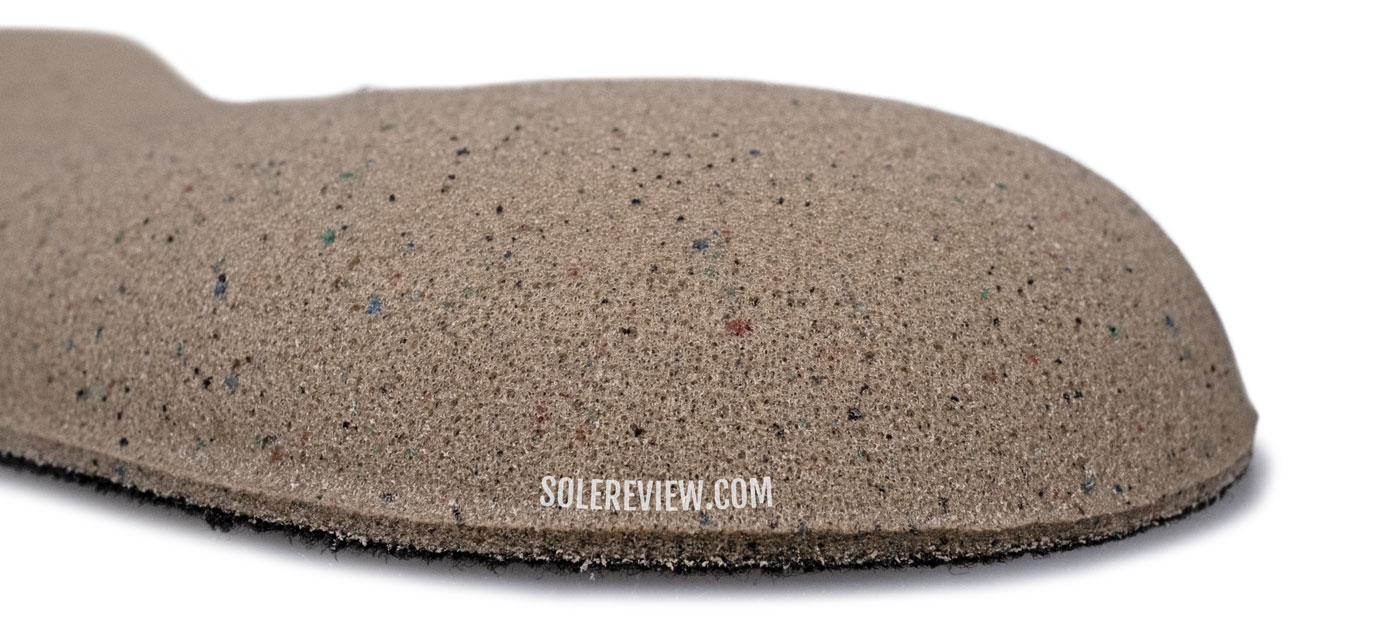
The soft insole feels much closer to the foot this time – thanks to the snug upper that exerts pressure on the foot.
The removable insole and foam lasting make up the two soft layers over the midsole.
The tight upper presses the foot against the foam layers, so the sensation of step-in softness is pronounced. This wasn’t the case on the previous Nimbus, so it’s interesting how much the upper fit can affect the cushioning behavior.
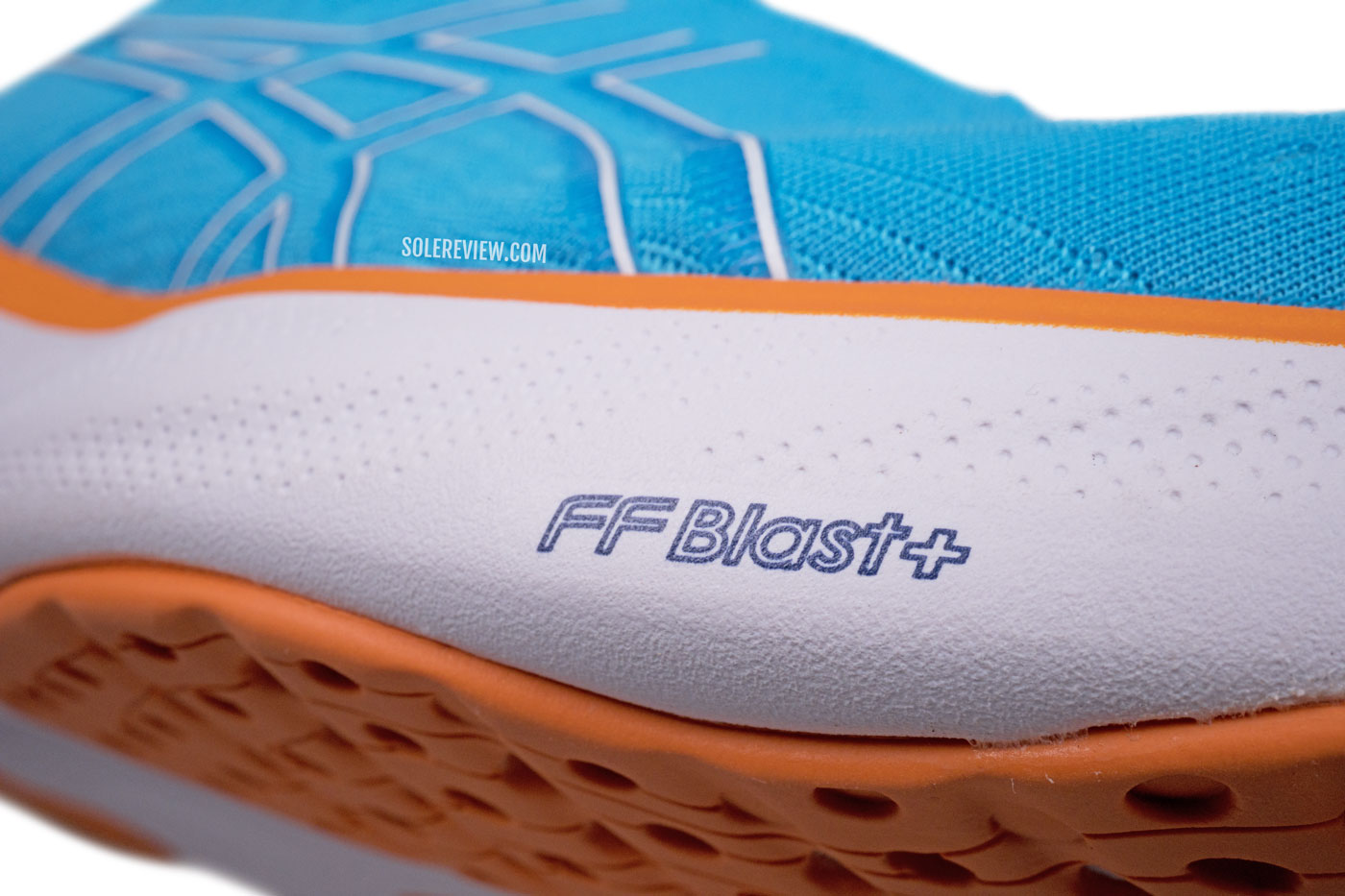
Unlike PEBA-based foams, Flytefoam Blast+ feels substantial, and has a rubbery feel to its softness.
The Flytefoam Blast+ material is not mushy, and neither is it springy like PEBA. That said, there’s a sense of rubbery liveliness that makes the shoe fun to run in.
Somewhere inside the rearfoot is an internal ‘Gel’ unit, but it doesn’t have a strong say in the overall cushioning – the Flytefoam does.
The midsole feels like it’s made of 100% foam. So either Asics has done an excellent job of merging the densities of the Gel and foam. Either that, or the Gel’s presence is insignificant in the grander scheme of things.
Previously, the Asics Novablast and Glideride introduced the rocker midsole profile to the Asics. There were other rocker-equipped models like the Metaride, but they had limited mainstream reach. Other shoes like the Superblast made use of that form factor, and now it’s the turn of the Nimbus to adopt it.
So what does a rocker midsole achieve in the Nimbus 25’s case?
Simply put, it’s more energy efficient. Without a rocker, the thick midsole is a lot for the foot to work through. On the other hand, an inflexible forefoot with a high toe spring (the gap between the midsole tip and the road) makes it easier for the foot to roll forward.
Unlike other max-cushion shoes like the Hoka Bondi 7, the Flytefoam Foam is eager to do more than just leisurely runs. It trots happily at 5:00 min/km (8 min/mile) paces, and 4:30 min/km (7:00 min/mile) speeds are within its performance boundaries.
Many years ago, a rocker midsole was the reason why runners began taking Skechers seriously – that’s how much influence these midsoles have on the ride quality.
The rocker profile doesn’t allow the foot to dwell long over the 33.5 mm thick forefoot – it gently nudges the foot forward at the end of the gait cycle.
So here’s a question. If the Novablast, Superblast, and Nimbus all have a rocker midsole, how is the Nimbus 25 different?
The weight provides a good clue. The Nimbus’s build quality and cushioning density feels more substantial than the Superblast. The Nimbus is two ounces heavier than the Superblast, and has more than an ounce over the firmer Novablast.
There’s a dense, rubbery quality to the Nimbus that’s missing on the bouncier Superblast. The Nimbus 25 isn’t springy, and the thick forefoot makes it a slower shoe than the other two.
The stability is excellent too, and so is the neutralness of the shoe. The midsole doesn’t deform excessively when loaded – the cushioning maintains its neutral behavior even under heavier body weight.
The overall stability is very good. The midsole has a wide footprint, even under the midfoot. The midfoot is usually the weak link when fully loaded, and the Nimbus 25 performs well.
Midfoot and forefoot strikers will find the Nimbus ok at best. It’s not so much the 8 mm drop, but rather the exaggerated heel overhang that makes the Nimbus 25 better suited for heel strikers.
It’s worth mentioning that the extended heel is a dirt magnet when walking around. If you like to have your running shoes looking squeaky clean all the time, a white midsole requires more than its fair share of maintenance.
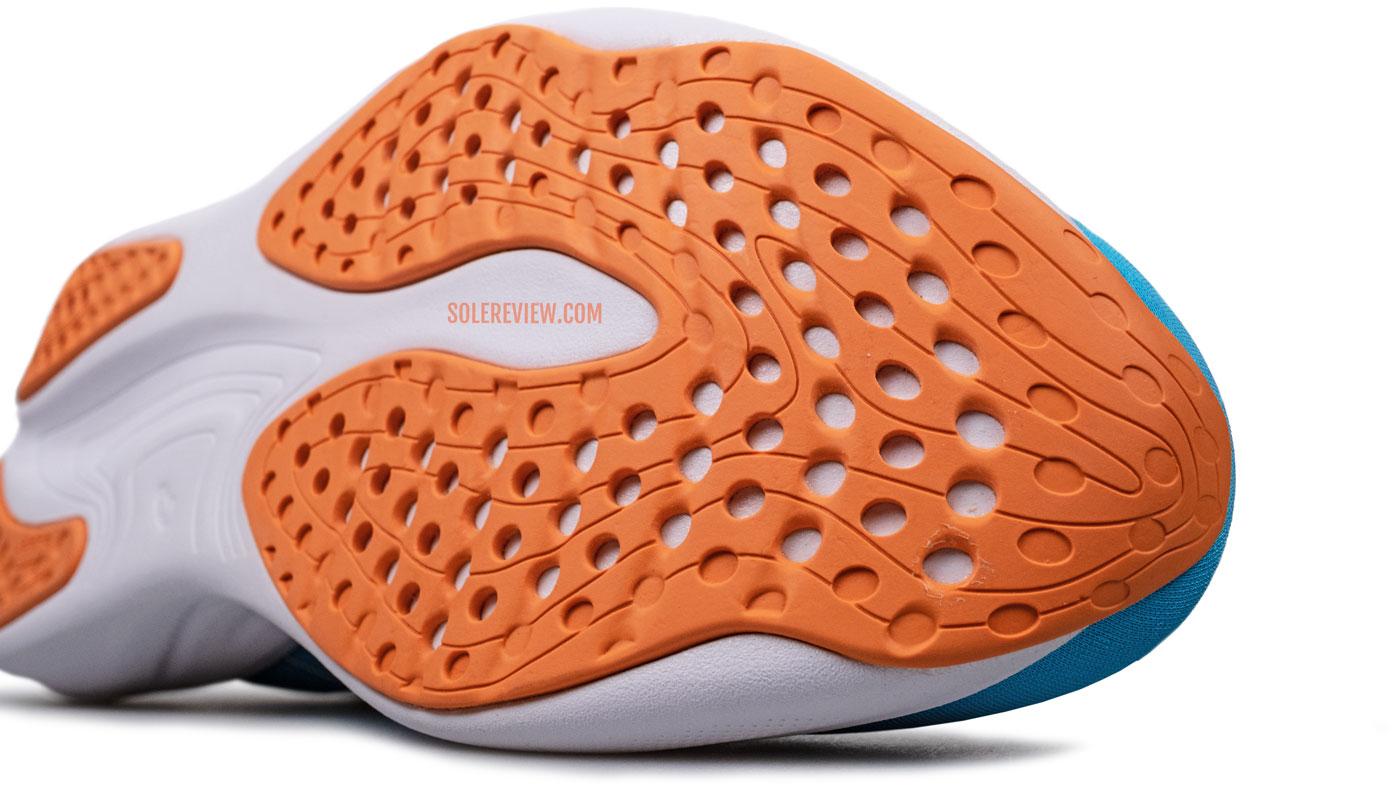
The outsole traction isn’t great on damp roads. The Nimbus 25 should have borrowed the Kayano 30’s outsole instead.
Nobody is sure why what Asics had in mind when they designed the outsole. The layout is okay, but the rubber lug design and compounding are off the mark.
The smooth texture of the soft rubber pieces grips poorly on rained-on surfaces. The traction is acceptable for dry roads, but that’s a low bar.
The decent grip on dry roads has more to do with how the soft outsole telescopes into the midsole and increases the contact area rather than the rubber lugs and compound. It’s puzzling why Asics did not choose the more sensible outsole design of the Kayano 30 instead.
RECOMMENDED ROTATION
On cooler days or dawn/dusk runs, the Nimbus 25 works as a marathon shoe as well as a daily trainer.
Else, Carbon-plated racers are plentiful. Asics sells the Metaspeed Sky (and Edge), among many others from competing brands. Our choice of a Carbon-PEBA marathon shoe is the Saucony Endorphin Pro 3 or Speed 3.
Firmer racing flats are a perfect antidote to the softness epidemic. The Asics Lyteracer 4 has the traditional racing flat ride quality for 5K runs, whereas the Hyper Speed 3’s higher level of cushioning is a better fit for 10K runs.
The adidas adios 7 (and presumably the 8) is also excellent for short-distance runs. The soft Nike Streakfly isn’t a bad 10K shoe either.
If we were to build a 3-shoe rotation with Asics, we recommend the lighter and firmer Novablast 3 as a daily trainer that can go faster than the Nimbus 25. We liked the Boston 10 and 11’s versatile nature, so the adidas Boston 12 looks and sounds promising.
IS THE ASICS NIMBUS 25 DURABLE?
We lack long-term testing data on the Nimbus 25 yet. The materials and construction quality suggest a lifespan of at least 400 miles. The soft rubber lugs have so far shown very little wear, while some scuffing will happen on the exposed foam areas.
The upper is not very breathable, but on the bright side, it appears very durable and resistant to long-term stress.
However, it’s hard to say how the narrow fit affects the durability. In the past, we’ve seen sub-par durability on tight shoes because of rubbing friction between the foot and mesh.
THE UPPER DESIGN AND FIT
The rocker midsole isn’t the only thing that the Nimbus has borrowed from the Novablast. The upper fit feels uncannily similar too.
In the front, the Nimbus 25 fits narrow, with particular emphasis on the small toe. The inner side – or the large toe – is relatively spacious with a bit of wriggle room. Purely on a stick-length basis, the Asics Nimbus 25 fits true-to-size.
On the other hand, the toe box height is near perfect. A larger-than-usual internal bumper creates a sufficient ceiling inside the toe box. However, it appears that the toe bumper is one of the reasons behind the narrow fit.
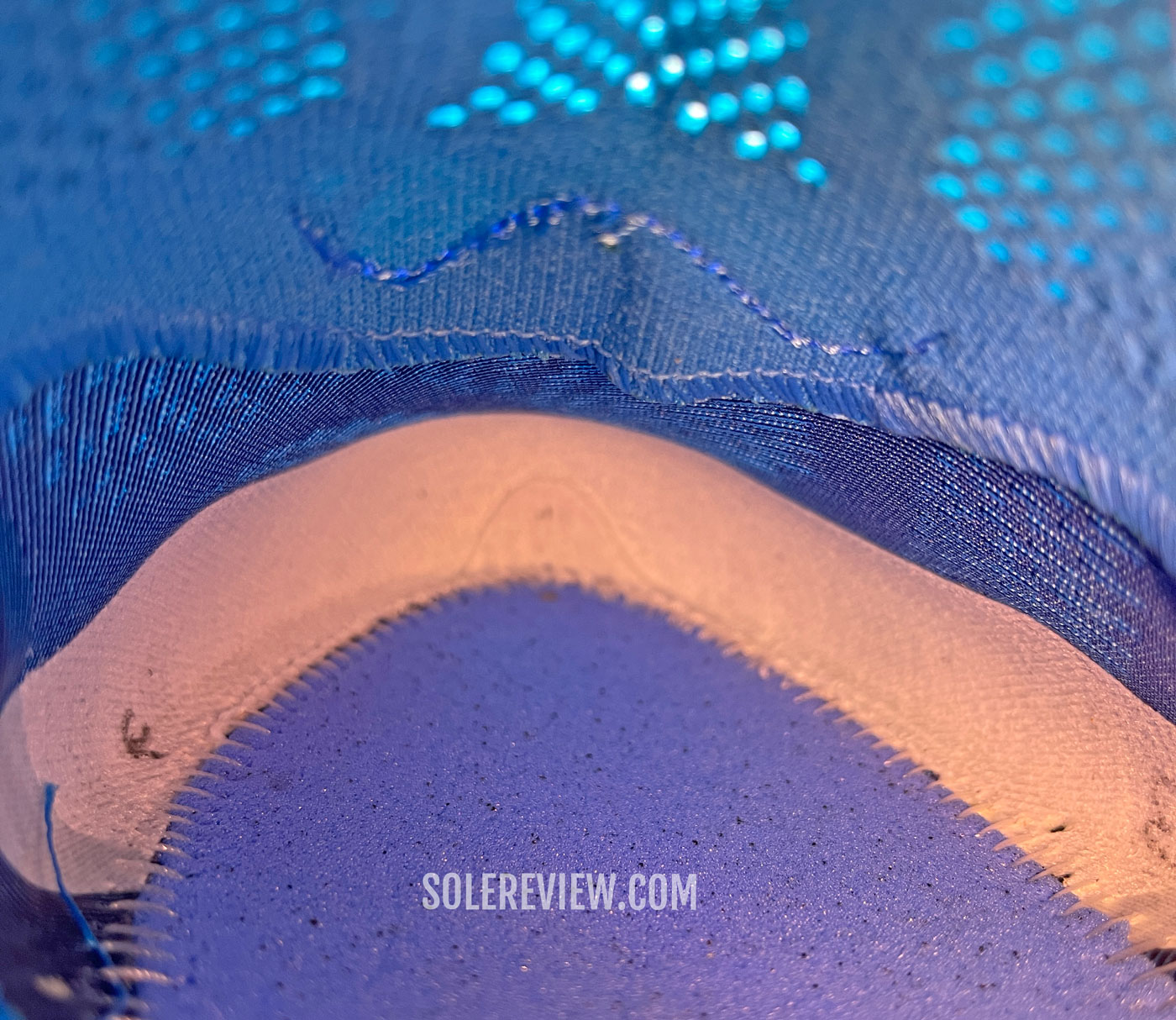
The internal bumper is very long and covers the small toe on the side. The interior traps a lot of heat during runs.
It’s not visible from the outside, but the bumper is unusually long. The semi-stiff component tapers down to the base of the Asics logo, and flanks the small toe.
On a running shoe, the tiniest of factors have a cascading effect, so it seems very likely that the bumper makes the fit tight over the small toe. Asics sells a wide and extra-wide size, so consider upsizing if you have broad feet.
The snug fit enhances the cushioning experience by pressing the foot over the soft layers of the insole and foam lasting. It’s no fluke that the Nimbus Lite’s fit had a similar effect on the ride quality; the Nimbus 25 is based partially on the Nimbus Lite.
A ‘narrow’ fit is a subjective thing, but ventilation isn’t.
The breathability of a shoe can be placed on a well-defined scale – it’s either warm, breezy, or somewhere in between.
The Nimbus 25 is a surprisingly warm shoe. It’s surprising because the elastic tongue isn’t padded and has functional vents. The surface of the outer mesh appears to have ‘vents’ as well.
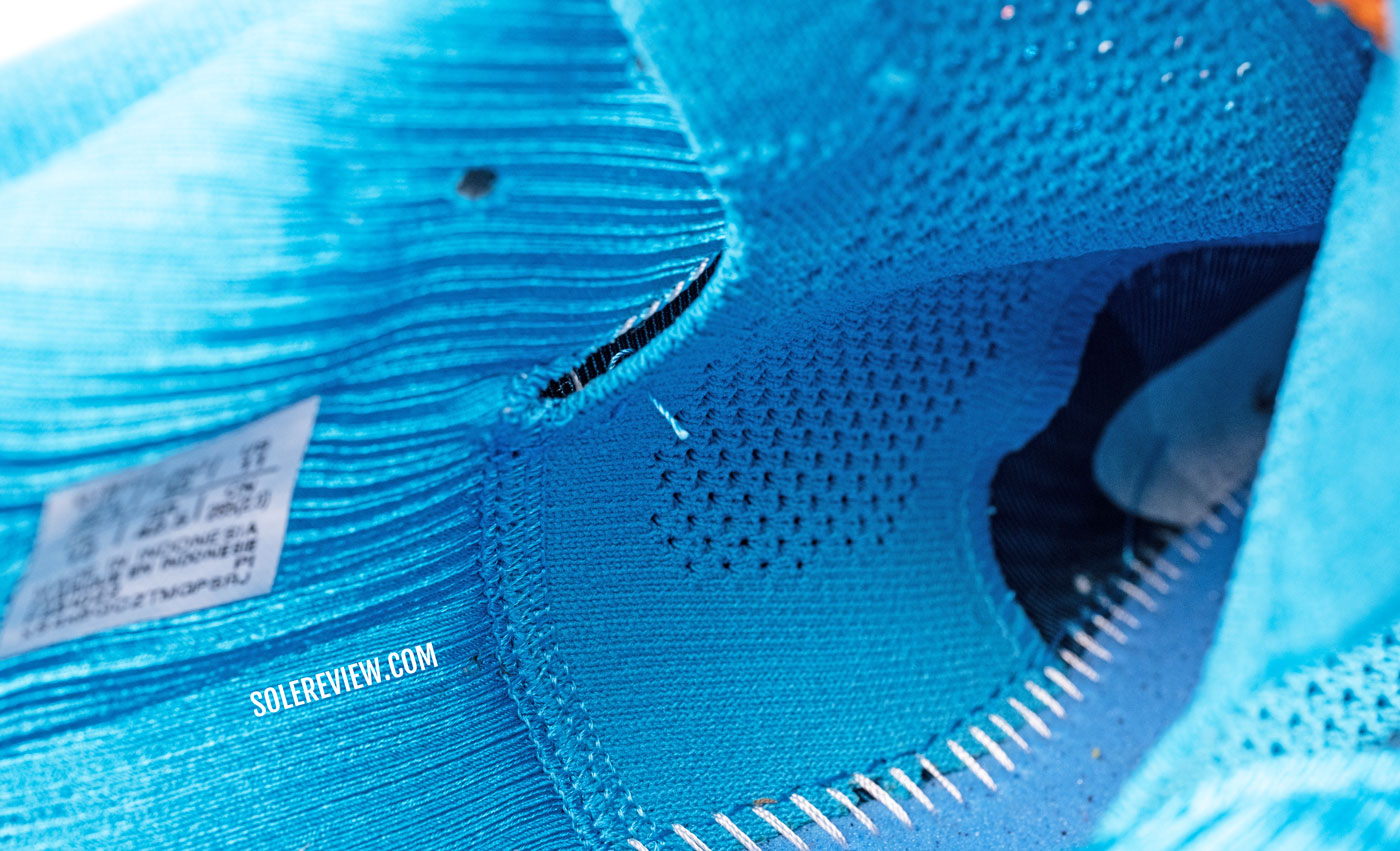
There’s not much the perforated gusset and tongue can do, considering how unbreathable the midfoot panels are. Also, note how long the internal toe bumper is.
There are three reasons why the Nimbus runs so warm. The midfoot has a thick backing material that obstructs the airflow, so the shoe feels the hottest around the midfoot. The large toe bumper also acts as a barrier to circulation.
Lastly, the outer mesh isn’t very breathable. Unlike some of Asics’s truly breathable uppers, the ‘vents’ don’t go all the way through. In the end, the thin and perforated tongue can only do so much.
The hot interiors cramps the Nimbus 25’s long-distance capabilities. There’s a reason why the top-end marathon racers have ultra-breathable uppers; the foot generates a lot of heat, so the upper needs an effective strategy to regulate temperature.
Running distances longer than 10K makes the Nimbus unbearably warm on a regular summer day. If you plan to run a marathon (or half) between May and September, we suggest you buy something else.
While we’re giving the Nimbus 25 some tough love, let’s call out the knitted tongue as well. This design is a straight lift from the Nimbus Lite 3 – down to the loop on top. The flat ribbon laces are also similar, and there’s a partial gusset securing the tongue.
The knit tongue has a great fit, but offers little in the way of comfort. The lacing pressure isn’t uncomfortable, but it’s certainly noticeable.
Asics should have taken a page out of the New Balance 1080 and added a padded flap on top – once they address the ventilation problem, that is. Again, just like the outsole, Asics should have looked towards the Kayano 30’s padded tongue for inspiration.
Asics knocks the heel fit out of the park. Not only is the padded heel plush and extremely secure, the new elastic loop is a joy to use.
Unlike most heel loops, the Nimbus 25 uses an ultra-wide design that’s integrated with the heel collar. An average index finger can pass through easily; there’s no struggle finding the opening.
Given its unique design, we won’t be surprised if other brands copy this loop for their future releases.
ORTHOTIC COMPATIBILITY
The Asics Nimbus 25 is compatible with most standard Orthotics.
While the removable insole isn’t as thick as the Pwrrun+ footbeds on Saucony shoes, it’s thick enough to be replaced with an aftermarket insole – be it a store-bought Superfeet Green or a custom-made Orthotic.
As the stock upper fit runs narrow, it may be worth considering getting a 2E width for better compatibility with orthotics.
PROS AND CONS
The Nimbus 25 is a lot of fun. Not only is the ultra-cushioned midsole extremely comfortable, but also manages to feel lively for the reasons explained in the review. What’s even more impressive is this tall midsole is supportive and neutral – it manages the cushioning bias extremely well.
Other parts of the Nimbus 25 need a lot more work.
The hot upper doesn’t do the comfortable midsole any favors, and the outsole design could have been better. Asics takes a page out of Nike’s playbook and whittles the reflectivity down to almost nothing.
The tongue could also do with some padding – like how the Kayano 30 does it.
COMPARISON: THE ASICS NIMBUS 25 VERSUS ASICS CUMULUS 25
This year, there’s a wider performance gap between the Nimbus 25 and the $20 cheaper Cumulus 25. The Nimbus 25’s cushioning is much deeper and (more) substantial under the foot, whereas the Cumulus 25 comes across as a ‘lite’ version of the Nimbus Lite. The Nimbus’s plushness is noticeably superior to the Cumulus.
The difference in specs explains the chasm in performance. The Cumulus is an ounce lighter with 4 mm lower midsole stack heights.
As one would expect, the new Flytefoam Blast+ also changes the Cumulus 25. It’s a very different shoe than the Cumulus 24 – it’s more neutral and consistent in its cushioning delivery. The visible Gel has also been deleted.
All the updates do not alter the Cumulus 25’s value proposition – it is a comfortable everyday trainer. But just know that the Cumulus 25 suffers from similar ventilation-related issues as the Nimbus, so this is not a shoe for summer runs.
SHOES COMPARABLE TO THE ASICS NIMBUS 25
The Nimbus 25’s competition is interestingly diverse. There are many shoes in the max-cushion trainer category, but all of them bring something unique to the table.
The Hoka Bondi set the template for the max-cushioned form factor, but it now feels a little long in the tooth. While the EVA foam midsole delivers deep cushioning for the long miles, it feels flat and cumbersome. The new Bondi 8 is inferior to the Bondi 7, so we recommend the previous model instead.
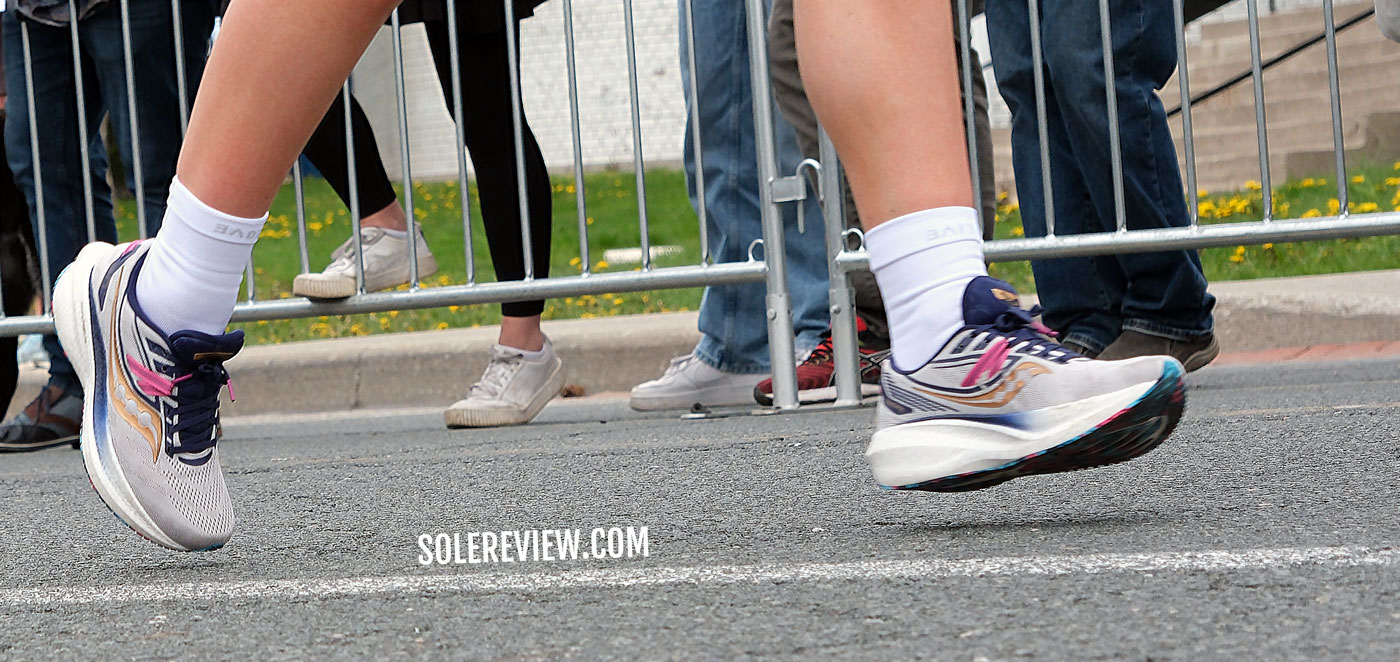
The Saucony Triumph 20 offers the near-perfect balance of ride comfort and versatility – this is a daily trainer as well as a marathon shoe.
The Saucony Triumph 20 is a happy medium between ride comfort and peppy transitions. The midsole lacks the plush cushioning depth of the Nimbus, but it’s relatively a better shoe for quicker paces. Its versatility makes it a better daily trainer than the Nimbus.
We’d place the New Balance 1080 V12 in the same category, except that its ride isn’t as resilient or responsive as the Triumph.
For a lighter and snappier ride, the Asics Superblast makes a strong case for itself. While the Superblast is not as plush as the Nimbus, the responsive ride and breathable upper make it a far better choice for long-distance runs.
Finally, if you have a thing for ON shoes, here’s a shout-out for the Cloudmonster.
Do you own this shoe? Improve this review by sharing your insights.

